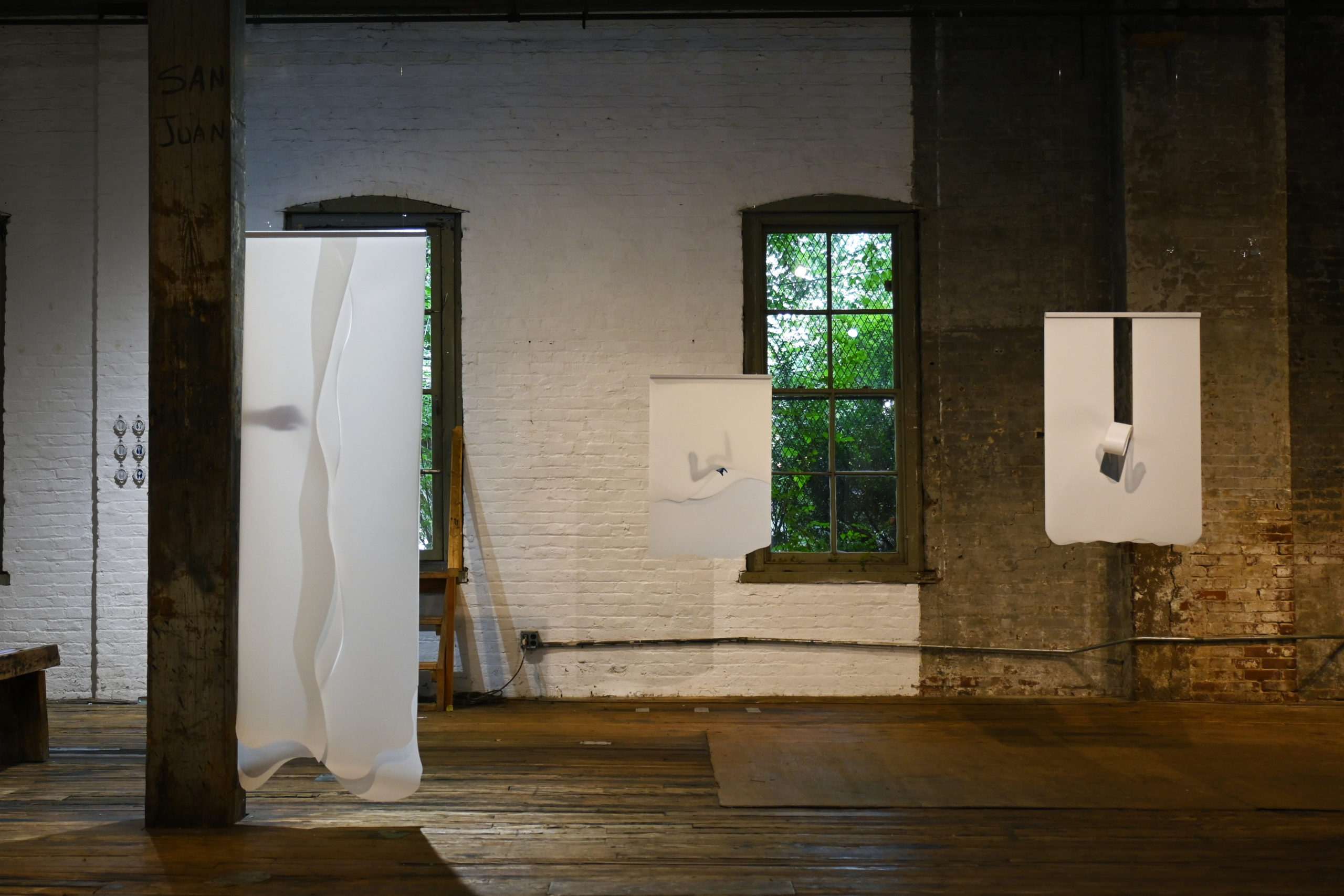
Heather Link-Bergman, installation overview
Heather Link-Bergman is a Denver-based artist, visual communicator, and educator. She is Affiliate Faculty of Art at Metropolitan State University Denver, a Partner of is PRESS (a publishing and design consultancy founded with Peter Miles Bergman), and Director of Intelligence of the Institute for Sociometry, an international artist collective and communications cooperative headquartered in Denver, CO. Her studio work takes form as collage, photography, performance, book arts, and social practice. Her work has been shown at MCA Denver, Center for Visual Art, MSU Denver, Chicago Cultural Center, ICA Baltimore, Printed Matter’s Art Book Fair, Vancouver Art Book Fair, among other venues. Most recently, Link-Bergman completed her MFA at School of Visual Arts in New York City, culminating in a thesis show “Liminal Forms” at The Invisible Dog Art Center in Brooklyn on view July 12 – 23, 2023.
Interview by Brandon Johnson
This body of work comes from your research on spirit photography. How did you become interested in the subject? Any findings that surprised you, or had a significant impact on the work?
Broadly, my art practice explores what’s missing—both literally and figuratively. So, spirit photography spoke to me because it’s all about seeing what is missing by photographing the inexplicable and unseeable, ranging from ghosts, spirits, thoughts, emotions, auras, etc. Through my research, I became interested in the modernist evolution of the photographic language of spiritual presence and the contradictions inherent in these images, how they simultaneously show what is and what is not yet.
While there were many surprises and synchronicities encountered in my research, the most meaningful finding for me was gaining a deeper appreciation of the social function and meaning of these types of images and how their primary purpose really isn’t to prove or disprove the existence of ghosts, but how they reflect our beliefs, anxieties, and/or doubts about the possibility of connection beyond life.
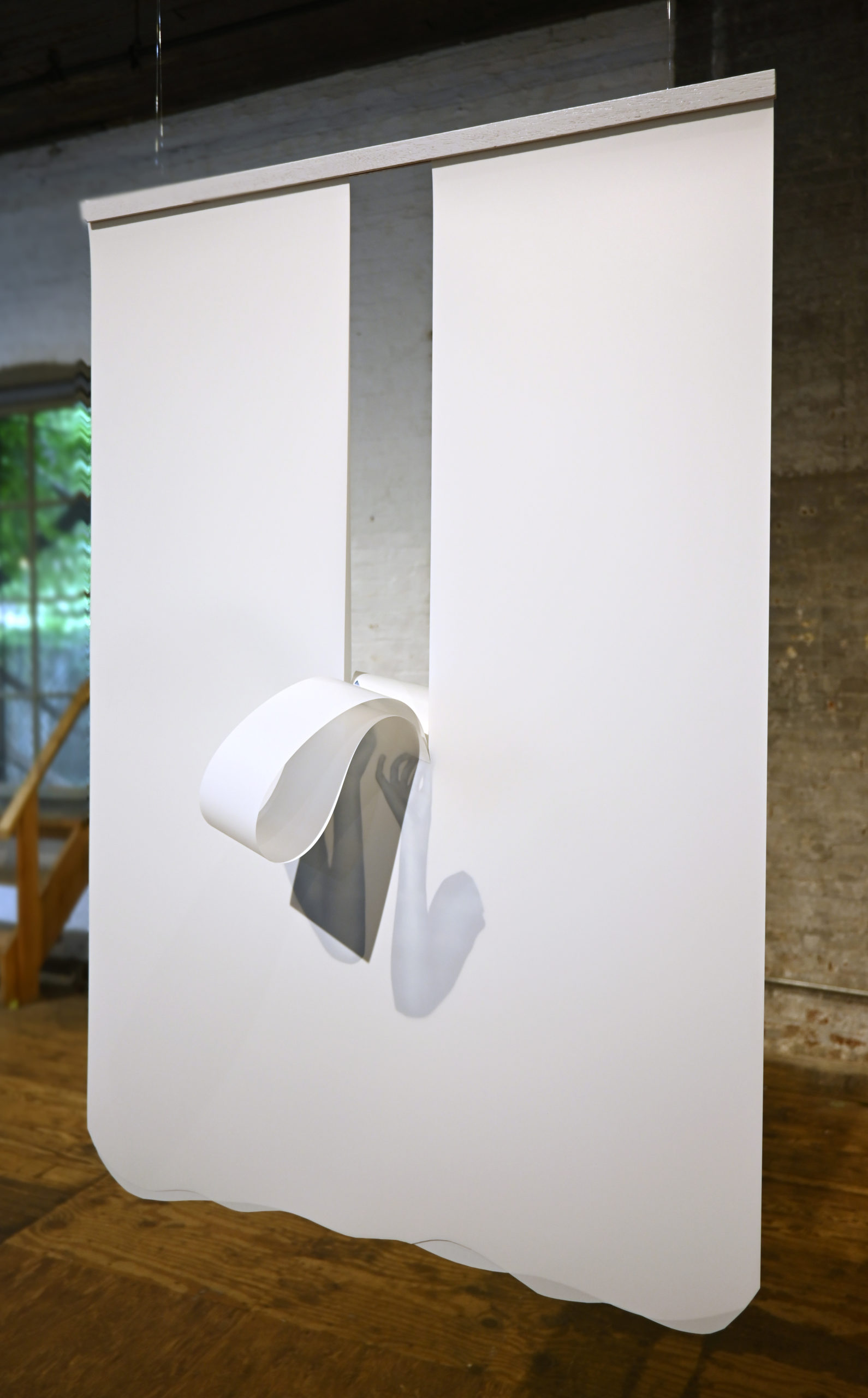
Heather Link-Bergman, Eternal Returns, 2023, Cyanotype on layered polypropylene paper, 38 x 25 inches
On a formal level over the last couple of years I’ve seen your work transition from pop-oriented graphic works to poetic minimal collages, now to a similarly minimal yet scaled up research-based cyanotype works on paper. What influences would you attribute to this progression?
The thread that connects this current project and my previous bodies of work is that they’re all collage in some form or another, and they are all about playing with the visual semiotics of specific genres of images or aesthetics. Spirit photography, as I see it, is a particularly fantastical and artful form of photomontage and collage. Early photomontage, or combination printing, was a laborious process where photographers carefully composited multiple negatives or exposures to compose a single constructed image. By the turn of the twentieth century, the spirits in spirit photography were often constructed from cut-outs taken from printed lithographic images from magazines. This is really where you start to see the visual motif of disembodied human heads, hands, or veils appearing as a visual short-hand for spirit. These observations drive many of the formal decisions I made with this work.
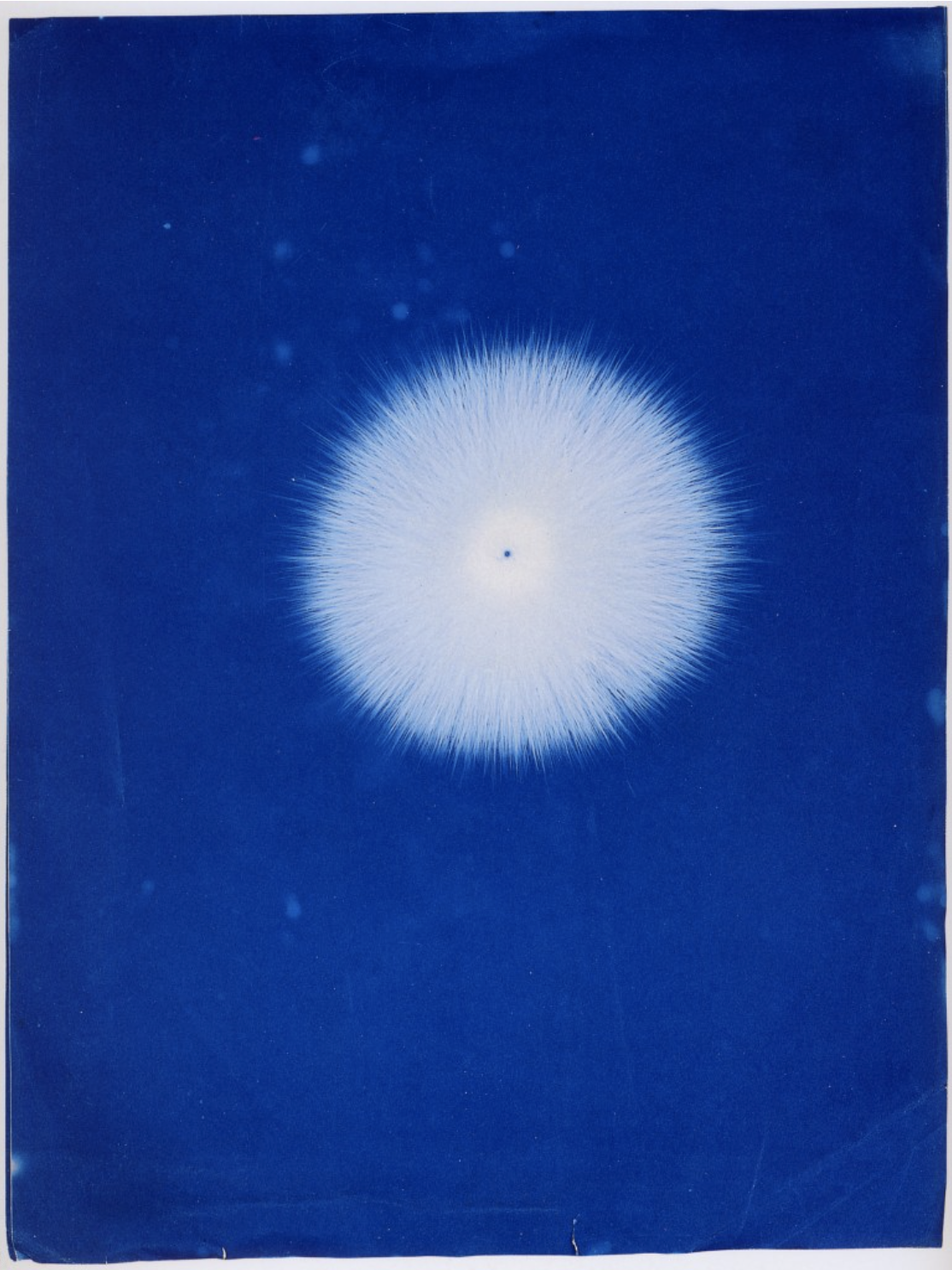
Hippolyte Baraduc, Electrograph of the vital fluid, 1895, cyanotype photograph
Why did you choose cyanotype for your printing method for this work? Is this a new technique for you?
Early in my research, I came across and was really entranced by a cyanotype photograph made by Hippolyte Baraduc in 1895 entitled Electrograph of the vital fluid. Baraduc’s “thoughtography” endeavored to depict what he believed was the universal fluid that flowed from all beings, living and dead. The term ‘universal fluid’ originated from German doctor Franz Anton Mesmer, who first developed these theories of universal magnetism, which became known as mesmerism. Baraduc was intrigued by Mesmer’s theories and hoped to use photography to document the existence of this universal fluid. Like all spirit photographers, Baraduc sought to make the invisible visible through his photography. Similar to more literal examples of spirit photography which feature a living sitter and a ghostly ‘other’, these photographs seek to represent what is present yet not recognizable or representable in our material world. Interpreting Baraduc’s photographic aberrations is like performing divination. We are left to imagine that these could be nothing but darkroom accidents or that they could be anything and everything.
The formal qualities of this image felt quite fresh to me and unlike many of the historical and contemporary cyanotype photography I’ve seen. It got me thinking about ways to use the medium I had written off. I was also excited about the conceptual possibilities of the distinctive blue color, which Yves Klein described as “the invisible becoming visible. Blue has no dimensions; it is beyond the dimensions of which other colors partake.”
While cyanotype is new to me, my approach to the medium is informed by my experience as a printmaker using an antiquated copy camera and halftone screens. I made all of my prints using my UV exposure unit, which is really designed for exposing printing plates. Getting the cyanotype emulsion to adhere to my chosen paper—polypropylene sheets—was a huge challenge. The paper is great as it looks perfectly flat and “untouched” even after taking multiple dips in water. What’s not so great is that it’s really hard to get any liquid, including cyanotype emulsion, to stick to it because it’s so water-resistant. I watched many would-be prints completely dissolve after they hit the rinse! This is where my historic research really came in handy, as I ultimately found my solution in the nineteenth century using a process similar to the gelatin or dry plate photographic process. I was so relieved to find a solution that I bought out most of the Knox powdered gelatin within the 2-mile radius of my zip code, just in case!
The ambiguity of Baraduc’s photographs is an interesting parallel to the way in which interpretation can be an important facet of contemporary art. While for Baraduc this ambiguity may have helped to shield against criticisms of veracity, for contemporary art it can open new potentialities beyond the artists’ original intentions. What role does interpretation play in your work?
This is a great question. Interpretation is part of any artwork, and it’s certainly something I consider a lot in my own practice. For my installation at Invisible Dog, I wanted to evoke a sense of the superterrestrial through my formal choices; I wanted everything to float. While making this body of work, I had written the phrase “hands suspended, awaiting, in an eerie blue twilight” in my sketchbook and I kept returning to that phrase as my aesthetic north star.
The spectral images and veiled forms in my work gesture towards themes of longing, absence, and spiritual connection. However, you do not need to literally believe in ghosts to understand haunting. Whether your ghosts are literal phantoms or just your ex, haunting in all its forms is the entry point for the viewer to engage with the themes in the work and an openness for them to form a more personal interpretation, should they choose to.
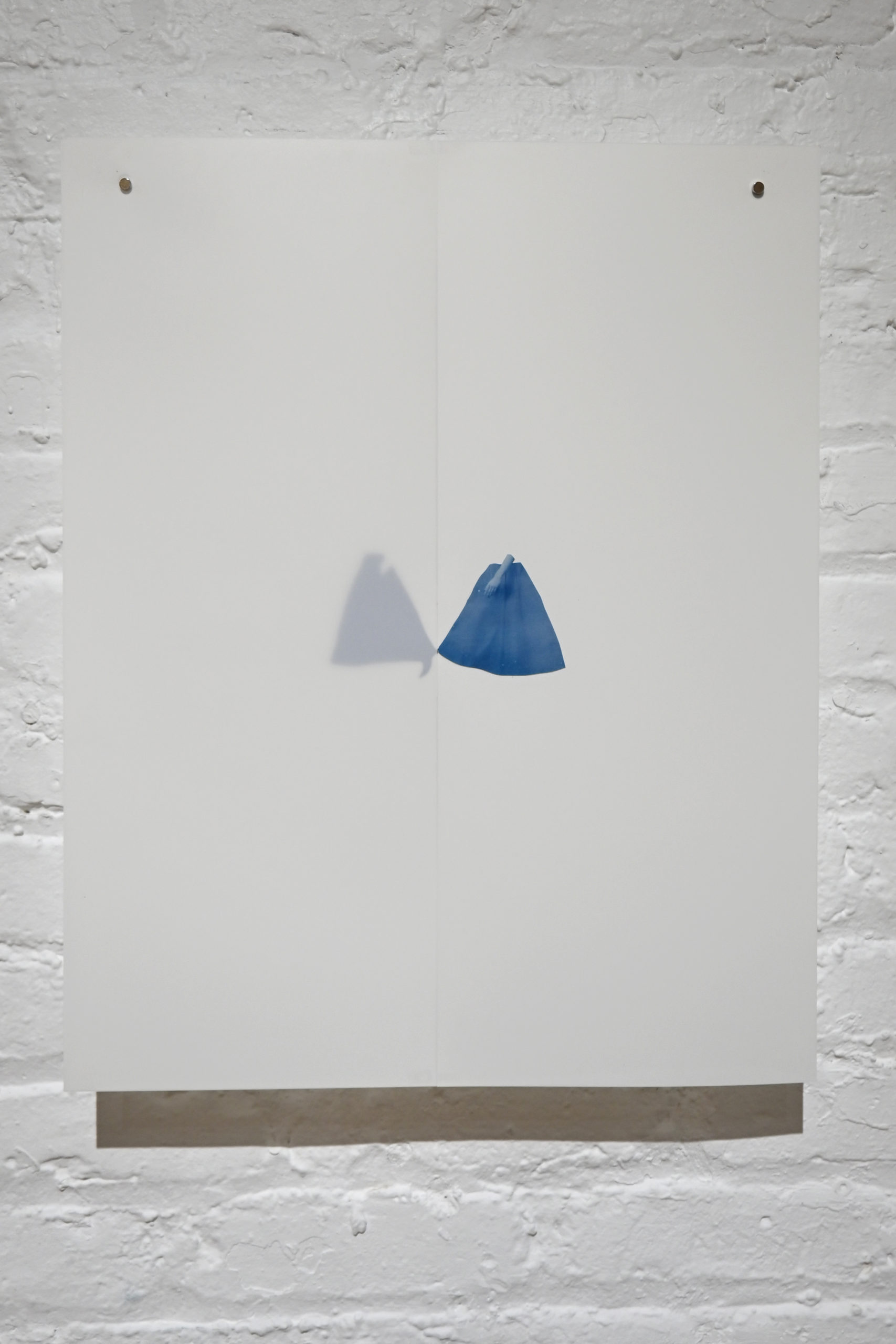
Heather Link-Bergman, Past Lives, 2023, Cyanotype on layered polypropylene paper, 20 x 16 inches
When considering interaction with the spirit world one often thinks of the “veil”—that invisible border which must be crossed to gain access to the other side. The works hanging from the ceiling (especially the tall rectangular one) evoke this notion with their layers and silhouetted hands and arms. Is there something more to the “veil” in these works beyond their physical representation?
Yes, there is definitely more to it, and you articulated it well in your question! There is a great deal of symbolism associated with the veil—it can represent what is disguised, hidden, or divided. Veils can shield or protect, and as a garment, they can take on many different meanings depending on the wearer and their religion, culture, or politics.
In my work, the veil is used as a metaphor to describe where we most closely confront the separation between life and death, consciousness and unconsciousness, or between our material reality and whatever may lie beyond it, i.e., ‘the world of spirit.’ For me, this project brings to mind the concept of ‘Viveka,’ which means discernment in Sanskrit and is the practice of using one’s discernment to see things clearly, as they truly are. Often Viveka is described as seeing the difference between the real and unreal, spirit from matter, and self from non-self. Viveka, in a sense, asks us to dwell on the threshold that mediates what is true and what is not. Spirit photography also asks us very similar things—to appreciate the interplay between the seen and unseen, spiritual and material, real and unreal—and to consider how those distinctions are not always as easy or straightforward as we’d like them to be.
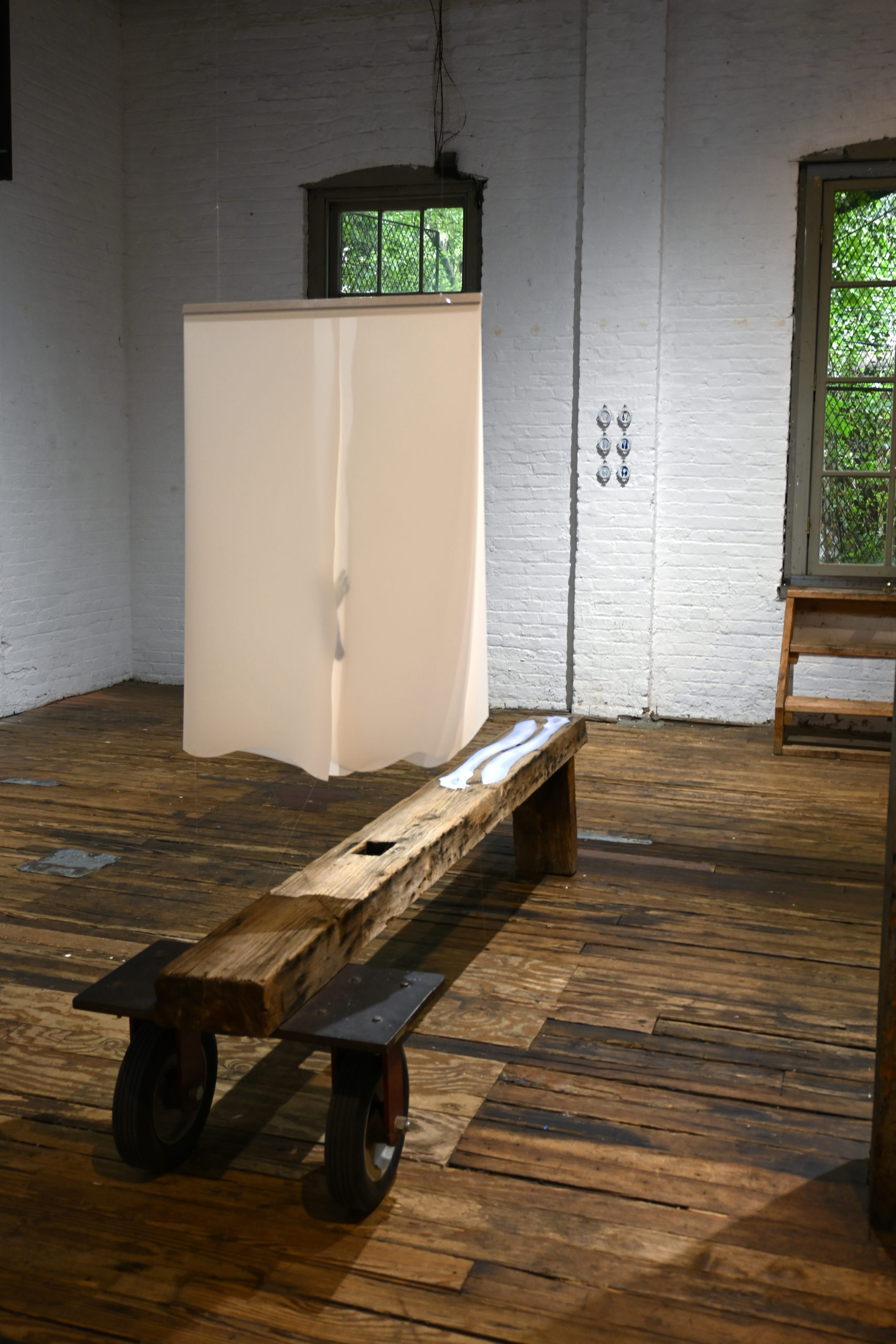
Heather Link-Bergman, Parting, 2023, Cyanotype on layered polypropylene paper, 38 x 25 inches
The show takes place at the Invisible Dog Art Center in Brooklyn, an old factory space with wood floors and columns that evokes 1970s Tribeca and Soho, which is fitting for this body of work due to the association of spirits with older structures. It feels like this body of work could expand into a larger installation. Do you agree? What other kinds of spaces could you envision the work in?
The space was such a perfect counterpoint for the work; I am so glad to have had the opportunity to show this work at Invisible Dog. I don’t think it would have worked as well in the white cube of a conventional gallery. As for expanding into a larger installation, yes, absolutely, I agree! I see lots of potential to expand into not only a larger installation but a multi-sensory experience as well. My ideal scenario would be to take over a residence—perhaps even a whole house—and not only think about how to realize these photographic works on a larger scale but also consider expanding the presence and totality of the installation by creating new works like furnishings, housewares, and wallpaper as well as incorporating scent, sound, and temperature design into the overall presentation.
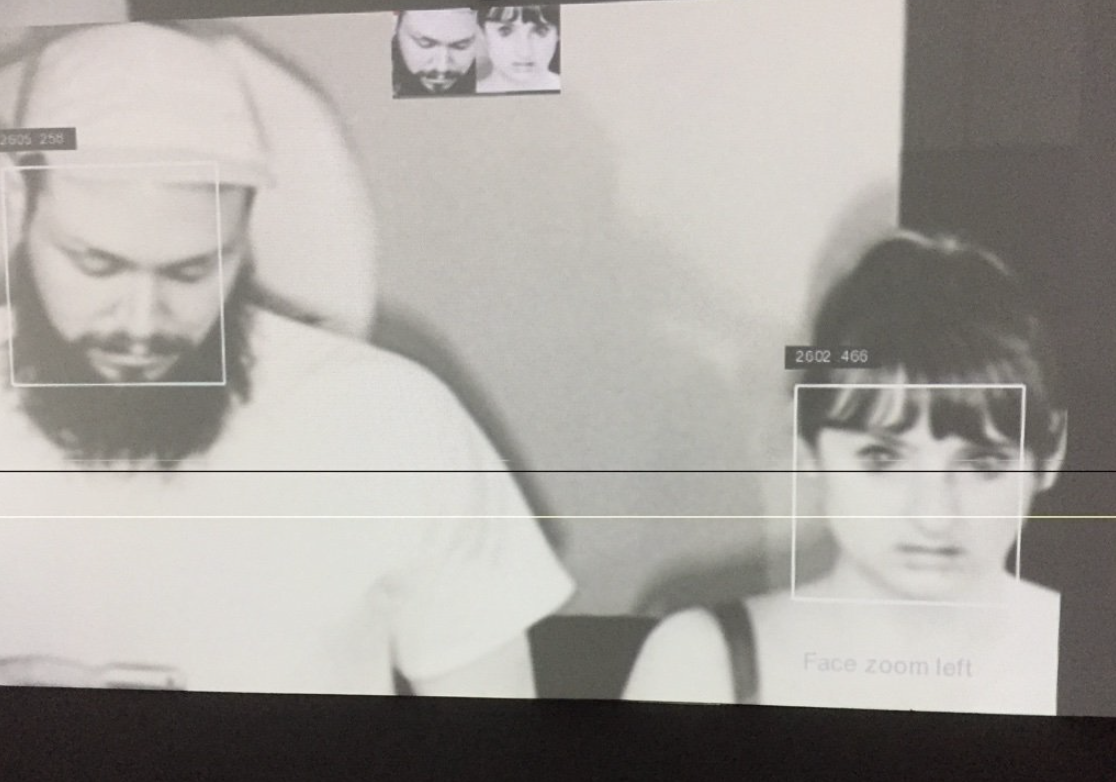
In July 2023, Denver, Colorado will witness the grand debut of an ambitious city-wide festival called Month of Video (.MOV), orchestrated by local artists Adán De La Garza and Jenna Maurice. From DIY venues to massive outdoor projections, .MOV aims to present an array of artists and genres across the video spectrum. As artists whose practices are deeply embedded within this under-represented medium, De La Garza and Maurice have a history of curating accessible programming for video work that is cutting edge, critical, and beautifully strange. We chatted about their early influences, personal practices, and of course all things .MOV.
Interview by Hayley Richardson
Can you give a general overview of your art practice(s)? Where and how did your work take shape, and what are some recent developments/changes you’re currently addressing?
Adán: Some older kids in my neighborhood introduced me to different subcultures really young. Like, I had a Slayer tape and a Terminator 2 skateboard at 7. So my early introduction to art was more through channels of skateboarding, metal, comics, video games, MTV, and Nickelodeon.
My introduction to photography started in middle school when I was enrolled in a class that rotated between black and white darkroom photography, literal card games (think solitaire and gin rummy as a class), and stagecraft. I was placed in this class because I ran out of elective options or was late registering. Initially, I thought I would move into skateboard photography, but I never really got serious and never was super good enough at skateboarding. In my late teens and early twenties, I made videos with my friends doing stunts and blowing stuff up in the desert, and that definitely laid the foundation for my interest in video and incorporating elements of risk-taking, failure, and absurdity into my art practice.
I kept taking photo classes through high school and got a scholarship to Pima Community College, but I wasn’t entirely sure what I wanted to study, so I enrolled in screen printing and photo classes (perhaps a theme is emerging here, haha!). It wasn’t until my twenties that I actually began consciously pursuing art. I had one class with a particular grad student who introduced us to more conceptual, experimental, anti artworks, and I was really resistant to it at the start, but by the end of the semester, I was totally a different person. Up to that point, the majority of high art I was exposed to was about “mastery,” “genius,” and the worshiping of some sort of authority… that never really resonated with me. These works were democratic, chaotic, and more politically aligned with my views. After that, it was something that I gradually kept doing more and got in front of the camera eventually.
I work predominantly in Sound, Video, and Performance Art, and more recently, I’ve been making speculative fiction works about the desertification of the earth, a video about tree canopy density in Denver and how it correlates to income, racism, regional temperature averages, and the history of land ownership, and some new sound performances. I hope to go on a solo tour through the southwest in September to an exhibition with my longtime homies at Everybody in my hometown Tucson, AZ. I’ve always got a few zine projects in the works as well…
Jenna: I was homeschooled (which I loved) but didn’t take any art classes in high school, so I didn’t really have an entry point for anything in art that wasn’t just painting or drawing or sculpture (and I wasn’t really into those). My sisters and I were super into theater and saw a lot of live theater and also participated in live theater all through high school. As a child, I was always interested in our home video camera. My sisters and I would shoot lots of things on that camera and then be delighted to watch them back, but never considered any of that “art.” I remember the day that I looked into a 35 mm camera for the first time when I was 15, and I remember looking through the lens and seeing the frame and the shallow depth of field, and realizing how powerful it was to be able to curate the world through a rectangle. Somehow it was really different than looking through that home video camera. And it impacted me so much that I began taking photographs and then began looking into what being a filmmaker was like. So I went to undergrad for photography and filmmaking, and in grad school, video really entered my practice. I realized that I didn’t want to make stories for people but would instead like to communicate complex ideas that unfold over time. And that’s basically how video art functions for me. I remember while I was in undergrad- going to New York for the first time in my life and seeing a Bill Viola retrospective at a big Museum there and thinking, “Wow. This is really different from films. and I love that. It’s about communicating ideas that seem deeper than stories that sit on the surface of things, and it’s super weird and surprising”.
My practice has always been about relationships and relational dynamics, probably because I have a big family, and we were always really close growing up. It has evolved to also include nonverbal communication as a central point of inquiry. Performance and using my body to communicate something came into play during grad school when I took a performance art class that changed how I understood what performance could be and how the body could be THE tool for communication. So now my work involves video, performance, and photography, and it deals with ideas concerning relationships (with myself, others, the past, and the landscape), non-verbal communication, and the language of the complicated human experience.
One of my most extensive projects (Concerning the Landscape: A Study in Relationships) is a series of performances for video in particular parts of the landscape where I try to build a relationship with the landscape using non-verbal or pre-verbal techniques (such as reaction, mimicry, etc.). I have been working on The Archive of Things series for the past few years. It’s an ongoing project documenting the world through the practice of Lumen Printing. The work in this series explores the question, “What can the sun reveal about objects that humans cannot see with their eyes”? These images are lumen prints- a process where objects are placed directly on black & white paper for darkroom prints and taken out into the sun for hours at a time. The long exposure from the sun lets the sunlight penetrate any part of the object that is not entirely opaque, resulting in a representation of the thing that humans cannot see by just simply looking at the object. Over a period of hours, the sun travels through the object and records details within the object, revealing hidden truths about these everyday items we encounter. The sun also interacts with the emulsion on the darkroom paper, creating colors from where there was only the possibility for black & white printing.
I am also currently working on a video essay that explores the complex topic of “grey areas” and how these areas can be viewed as both places of challenge and chaos (because they are undefined) as well as places ripe with possibility (also because of this area of no clear definition). In this way, my practice is now exploring “relationships” with situations… and not just people and the land. 🙂 I am currently in residence at Redline Contemporary Art Center.
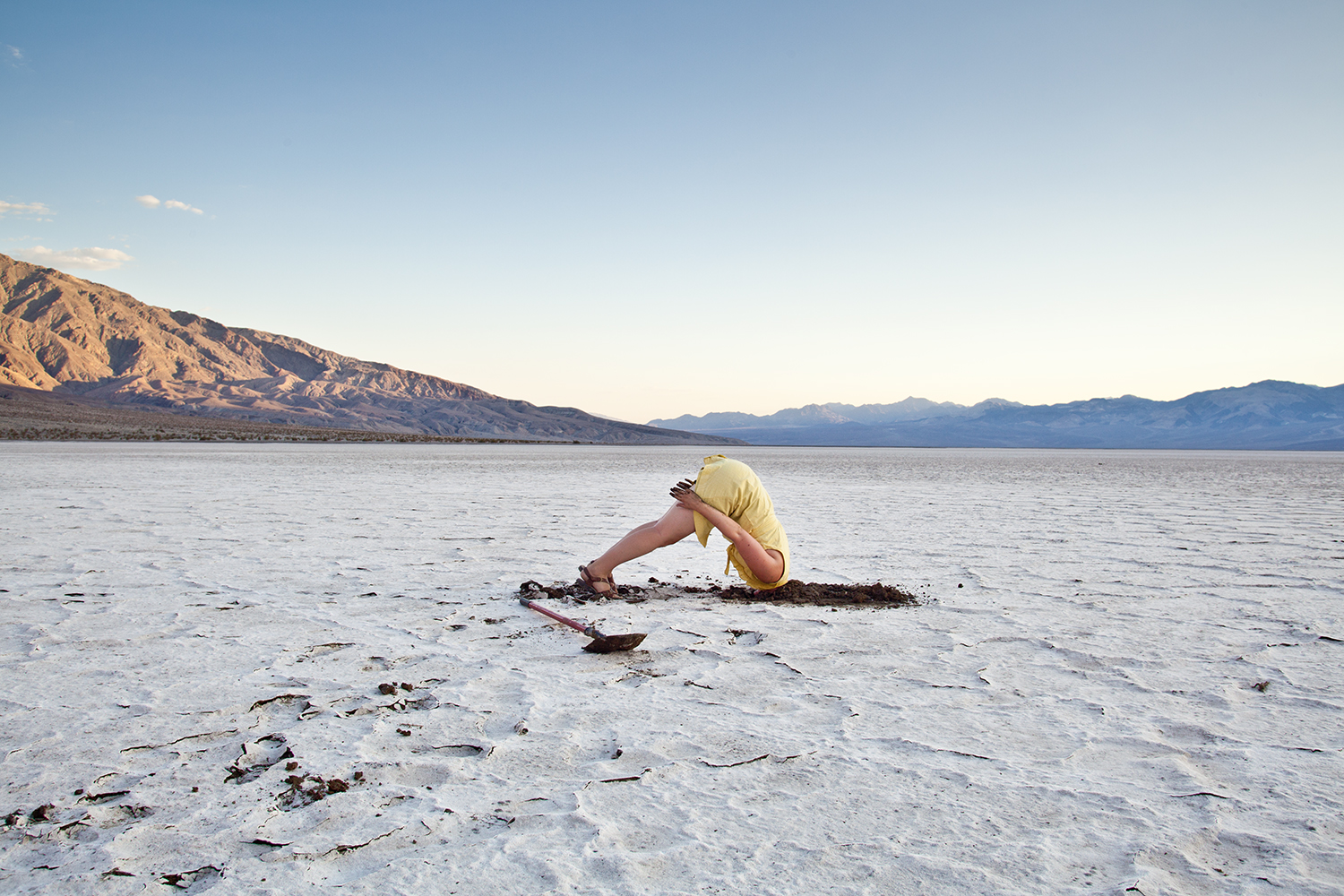
Jenna Maurice, Traverse, at Union Hall curated by Esther Hz
In addition to your individual practice(s), you also have a history of community engagement via curated screenings for the public. Has interfacing directly with a public audience and providing a platform for other artists influenced your own practice at any point?
We both view programming/curating as part of our artistic practice. As contemporary artists, we feel it is our responsibility to champion other ideas and approaches outside our practices. Especially when the mediums and ideas you work within are under-represented in your community. Showcasing time-based works regularly is also a way to maintain an artistic community in Colorado. If you feel like you have no opportunities to show or discuss the work you make in your city, you’ll probably move somewhere else that has that… and might even be cheaper.
I think we both have been able to make significant friendships through shared experience and interest in art. So programming/curating has always been an extension of those goals where we get to share the experience and ideas of others with the community we are in. I think our dream jobs would be to make things happen with our friends that are larger than us, and .MOV has been a way for us to accomplish that desire, be it outside of our day jobs.
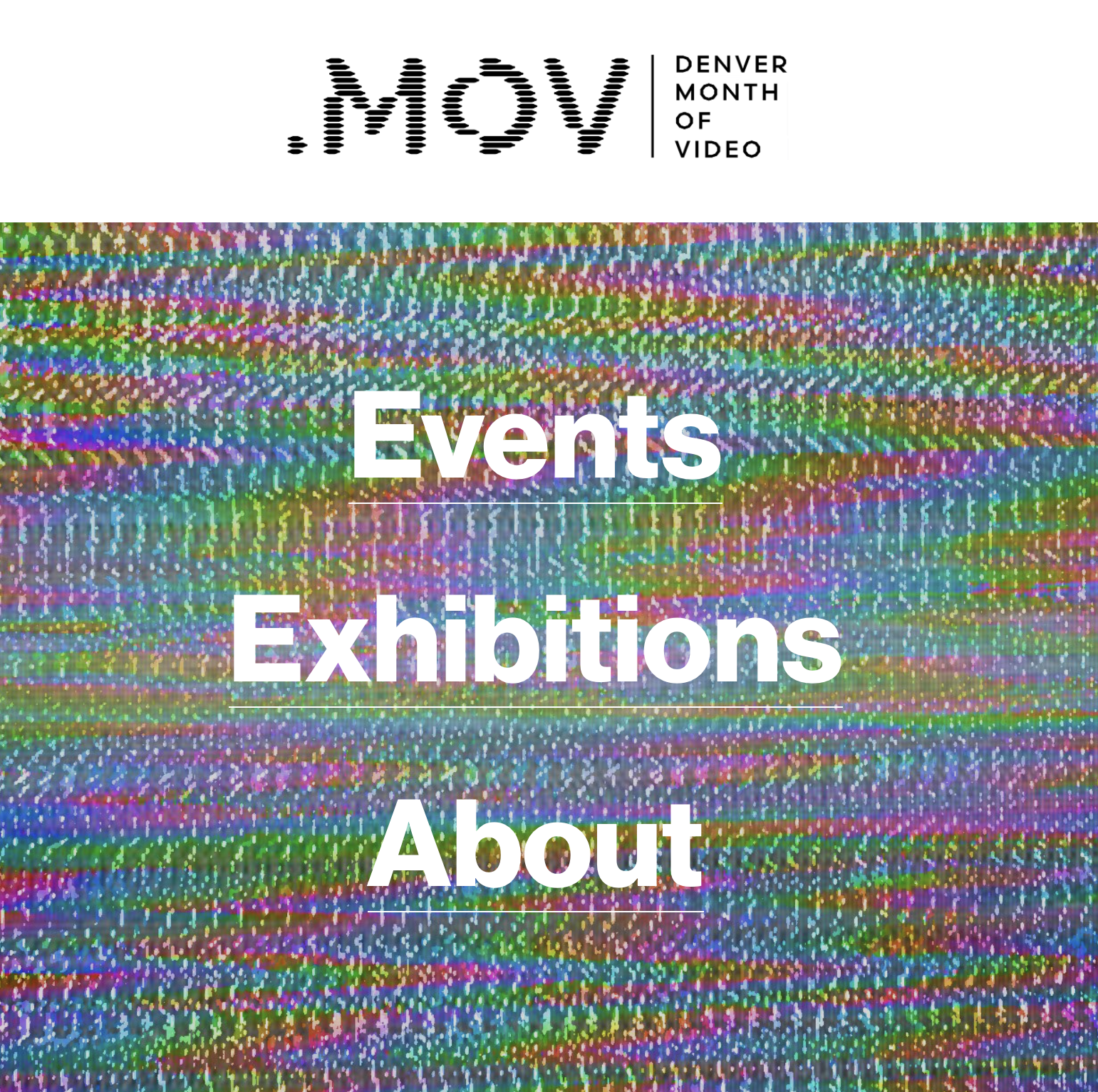
In July 2023 you will launch one of your most ambitious projects in Denver Month of Video (.MOV). Tell us how this project developed and what we can expect to see.
Month of Video is a culmination of a few dreams of ours. We are both video artists and just want to see more video art in our city. We wanted to present a whole month where video is the focus and see video exhibited in as many art spaces in town as we would get on board. In Denver, one can consistently see painting/sculpture/photography in art spaces. Video seems to be a bit more of a rarity, so we wanted to be able to go see video art at a bunch of places for one month. We’ve never run a festival before, but there is always a first for everything. 🙂
We also wanted to highlight the different forms of video art, creating access points for things we wish we could have been exposed to earlier in life. The whole festival is based on this idea of making space for time-based works that engage with many ideas and approaches to making work.
So, we have some specific exhibitions for .MOV that focus on these different forms. We also have some really rad friends who are experts in particular realms of video, so we asked them to curate some of these shows. For instance, Understudy Gallery is having an exhibition that highlights performance for video, curated by Quinn Dukes- the Director of the art fair called Satellite. This is a very particular type of performance art that is usually enacted in a specific location, and the only way to document it is with video. So the final piece of art these artists can display is video, but the initial performance act is the communication. We are also highlighting the genre of art video games through an exhibition where visitors can play all of the games on view (this exhibition is curated by a collective that Adán started called Dizzy Spell). Along with this exhibition, we invited a video game scholar (and dear friend), Nicholas O’Brien, to curate a screening based on videos that use game engines in their creation.
Signal Culture (a residency focused on tool-making and video research) recently moved from upstate NY to Colorado, so we are having them program a screening of work from their alumni to showcase the different work happening there.
Another show we are super excited about is one we are curating for Redline Contemporary Art Center from the main contributors of a public secret society called New Red Order. The show- “New Red Order: Crimes Against Reality”- examines the contradictions inherent in a society built on both the longing for indigeneity and the violent erasure of Indigenous peoples, lands, and ways of life. NRO provocatively questions how these desires can be channeled into something productive, sustainable, and transformative. The show includes a selection of video work that invites viewers to critically engage with the complexities of settler colonialism, cultural appropriation, and enacting of indigenous futures.
Check out the website for all of the info denvermov.com

New Red Order, Crimes Against Reality, at Redline curated by Adán and Jenna
You both describe being exposed to the creative arts through pop culture, school, and family at a young age but also express that video is a particularly under-represented medium. What are some additional resources you would recommend or hope to see made accessible to individuals interested in video?
Adán:Realistically the places I would like to see time based arts more is K-12 education and just at more art museums. Most students are first exposed to time based arts in college and we can start having those conversations way earlier. This limitation is often echoed in museums and galleries and that has an effect on what is deemed valuable and acceptable culturally outside of those institutions as well.
Jenna: I totally agree. We both worked in academia for longer than a decade and consistently saw our students having no exposure to time-based arts before college.We would like to see contemporary art “normalized” in the way art history is taught before students enter college. It would be so rad if students were already familiar with artists who are alive and making work about important topics using time-based mediums, and not just familiar with dead white-guy painters. So, access points as well as normalizing video within exhibitions is a great way to help with this.
Is there anything else you’d like to share here? Upcoming projects or places where we can keep up with what you’re working on? (aka shameless plug portion!)
Collective Misnomer might keep doing stuff.
After MOV comes to a close, Maurice and De La Garza will continue their respective video art projects. One of Maurice’s current works-in-progress includes a video essay examining the prolific possibilities within ambiguous “gray areas,” or domains lacking clear definitions. De La Garza, working on “video pieces focused on climate change and the desertification of Earth,” will also embark on a solo tour from Denver to New Mexico and Arizona this September on his way to exhibiting his work at Everybody Gallery in his hometown of Tucson.

Born in Brooklyn and now living and working in the Bronx, Ray Lopez is an artist with a deep love for film who creates visual works in acrylic, watercolor, marker, ink, and collage. I first met Ray when he was a member of the Studio Program at Healing Arts Initiative (HAI) in Long Island City, Queens. Now working with Fountain House Gallery, Ray recently completed a residency with this organization on Governors Island in New York Harbor where he invited me to visit his studio and showed me some recent drawings, mostly portraits, he’d been working on along with an excellent exhibition downstairs that included some of his works. It was a very enjoyable and easy voyage from Brooklyn via the ferry departing from Red Hook near Pioneer Works. Governors Island is a special part of New York City, and true to this city’s spirit it is a hub of cultural activity where you can find extraordinary artists like Ray at work! Highly recommend visiting Governors Island this summer to see what it’s all about, and although Ray’s residency has since ended you can learn more about his work on Fountain House Gallery’s website.
Interview by Brandon Johnson
When did you begin making art and what path has your career as an artist taken since then?
I started to make art when I was a young kid—drawing or doodling images from movies, TV shows and cartoons as well. I would usually hide my drawings from my parents, especially my mother, Maria, because of the themes from horror movies for which I did scenes as a storyboard format. During my teen years in High School, I never took any serious art classes, but I was doodling or sketching on my school notebook just for the fun of it or when I was daydreaming. During my late teens and twenties I took a pause by not doing any serious artwork, but went back to making art while I was attending workshops at HAI (Healing Art Initiative), which closed down in spring 2016. During that time I was making art and making a career as an illustrative artist. I’ve continued making art at my small office/art studio space in the Bronx at my current apartment. And displaying some artwork at Fountain House Gallery in New York City and also other galleries and venues throughout the city.
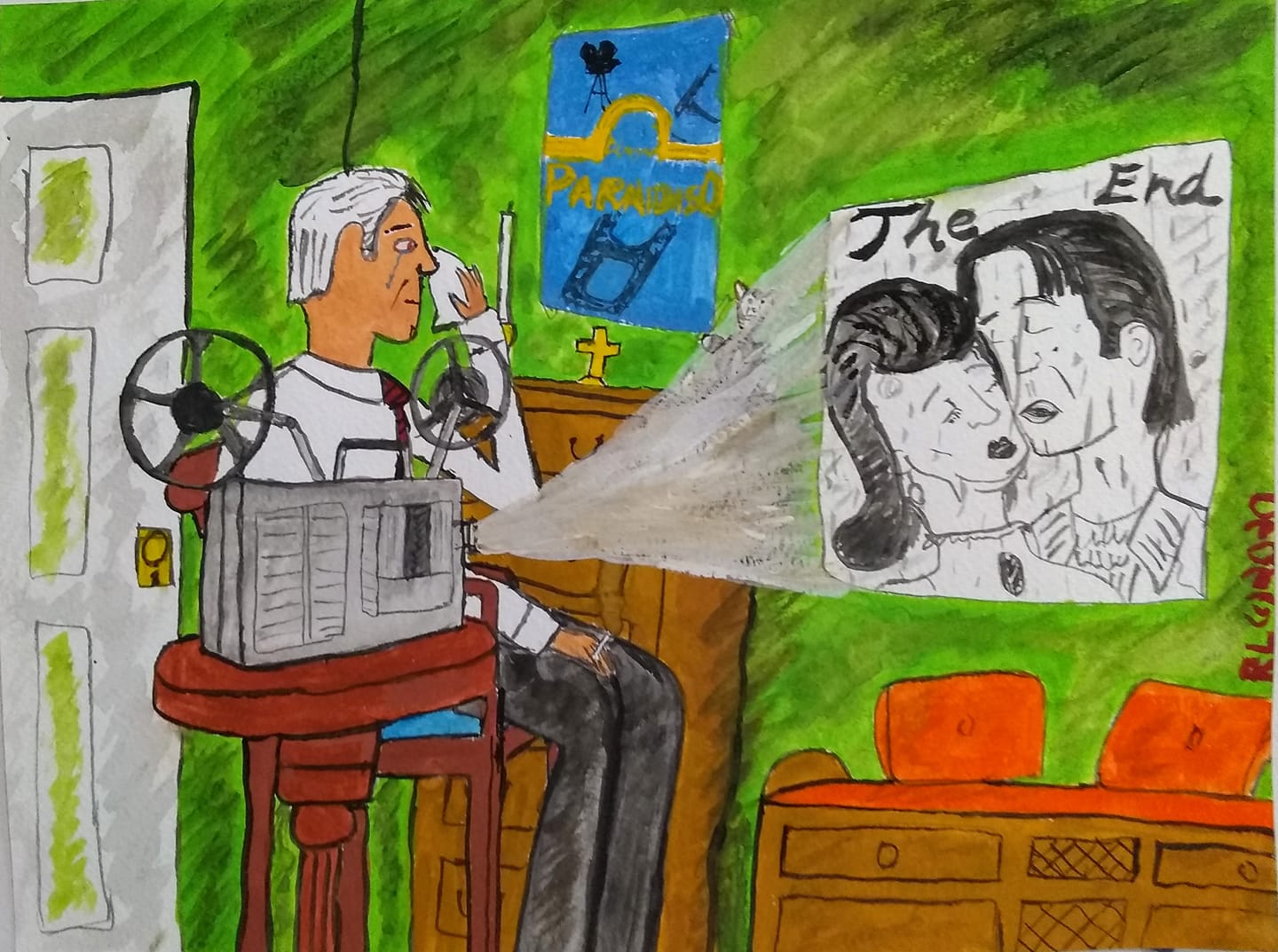
Ray Lopez, Cinema Paradiso: A Retrospective, 9 x 12 inches, watercolor on paper
I know you are a big fan of film. Can you explain how film influences your artwork?
Well, film is a quite big endeavor for me to interpret into art. Growing up I’ve watched a lot of movies on TV, video and sometimes at the movie theaters. I first started watching these art house, avant-garde and independent films in my teen years, which includes foreign movies that gave me some intellectual ideas of creating these artworks from movies like part of a scene, an advertisement like a movie poster of the actors, actresses as well as the world class filmmakers like Pedro Almodovar, Peter Greenaway, Mike Leigh, Federico Fellini, Lars Von Trier, and sometimes Hollywood directors like Steven Spielberg, Kevin Smith, Steven Soderbergh, Quentin Tarantino, Robert Altman and the late great John Hughes. I usually make scenes from a film or a retrospective of a movie. But in good, glorious, rich, bright and vibrant colors of my artwork that I have interpreted into art from films just like a Almodovar or Fellini feature.
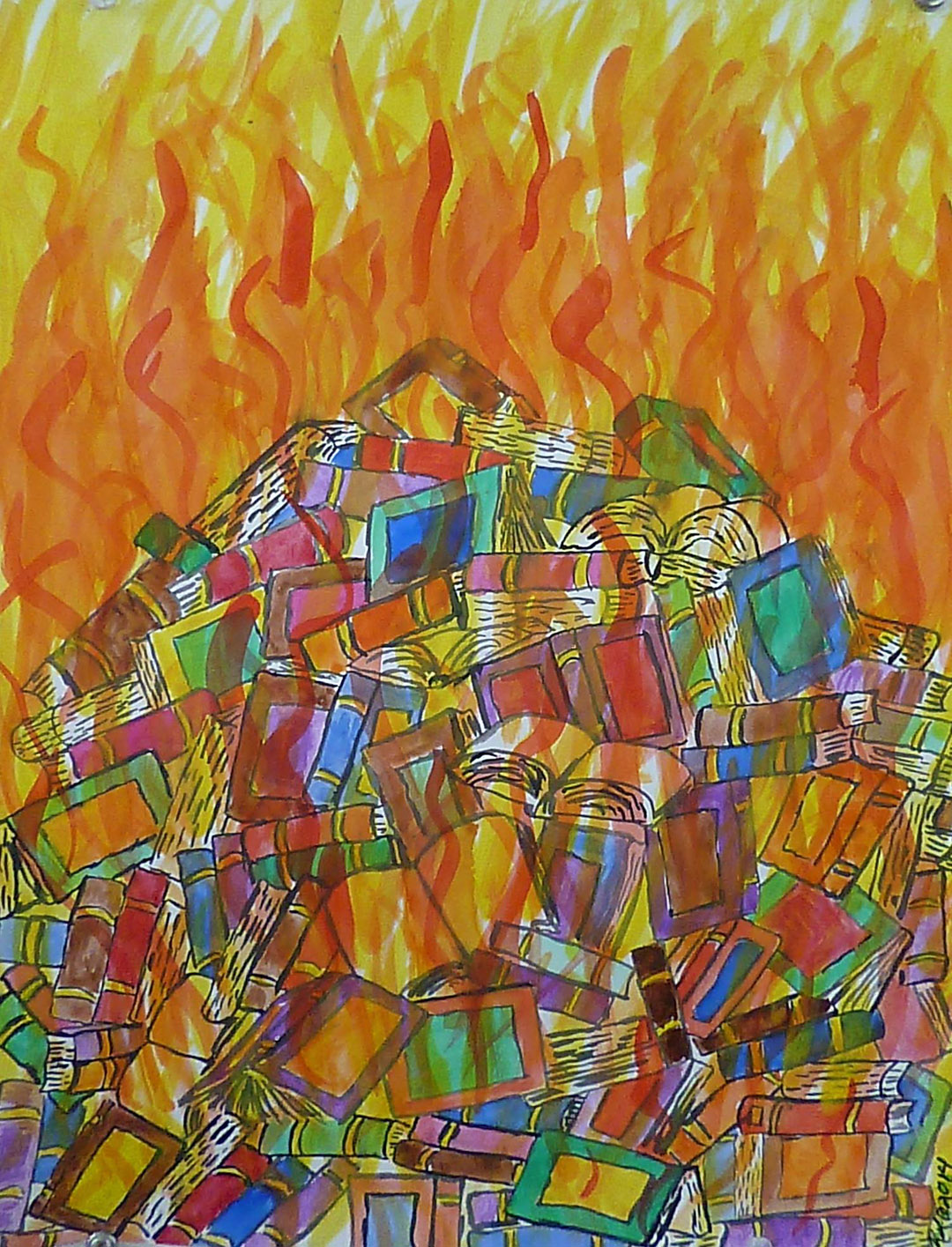
Ray Lopez, Burn Thy Books, 11 x 15 inches, gouache on paper
I’ve also seen artworks of yours based on current and past news events. Where do you get your news from, and what inspires you to respond to these events with your art?
Well, we are totally occupied with what is going on with current events from the news sources and how the subject matter of what is going on from this city, the whole country, and especially the world we live in. For example, like the one-year anniversary of the overturn of Roe vs Wade from the Supreme Court, for which I have made a painting of the Statue of Liberty. Instead of holding a torch, she’s holding a wire hanger with some blood on it and she’s wearing a pink stole around her. It’s a truly remarkable piece of art that deals with the subject matter of this controversial issue that can get people talking. And I also made art that deals with the human rights campaign, activism, climate change, police brutality, the #metoo movement and anti-war, especially anti-Trump agendas that can be made into art that I would like to use to address the ethics of the humanity from society. By making art, it can make a difference of what can be addressed from the current or past standpoint of the media outlets and can be an informative response from society that can make or break the news sources that can be a challenge to deal with. And the person’s views of their response by giving a perspective of their own.
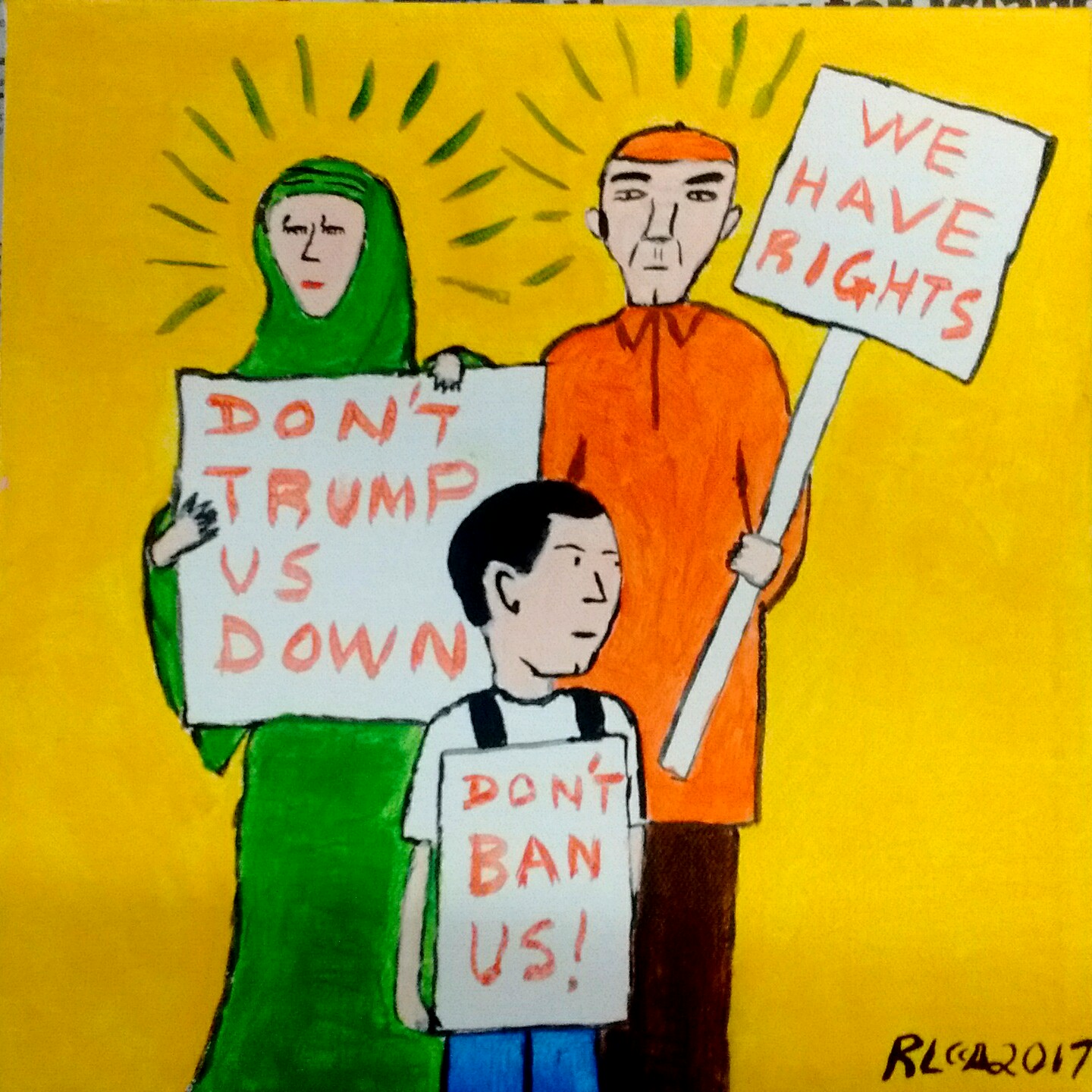
Ray Lopez, Don’t Trump Us Down!, 9 x 9 inches, acrylic on canvas
Last weekend I visited your studio at Fountain House on Governors Island where you are finishing an artist residency. What was this experience like for you being on the island and working in this setting?
It was such an achievement that I have accomplished by being part of this residency. I really had a great time being part of the whole art community from the Fountain House Gallery and Studio who gave me a spot with three other artists doing the same residency for the two month period from May to the end of June. My studio or room (as some visitors called it) is kind of low key with a few postcards hanging from the wall in front of my desk or table with dreary settings—cracked and chipped white paint, decaying walls and a comfortable atmosphere, but sometimes inside, it gets either muggy or cool depending on the weather outside. I believe the house was built during the Civil War era or around that time. It got me to go to the island, not just doing sketches from my studio, but to visit the island by watching and admiring the views of the city and the Hudson River, including the Statue of Liberty and Ellis Island. And we got visitors stopping by at the residency to see what’s in store for them. Especially the displays of artworks from the artists (including me) that has been exhibited in the downstairs area. I also got to interact with visitors by giving them a guided tour of the headquarters of the residency. Also, on the section of Colonel’s Row in Governors Island there are other artist residencies programs along the same row of houses with these great art programs and organizations that are a hidden treasure for the art admirers all young and old alike. It was quite a great place and quite a nice experience.
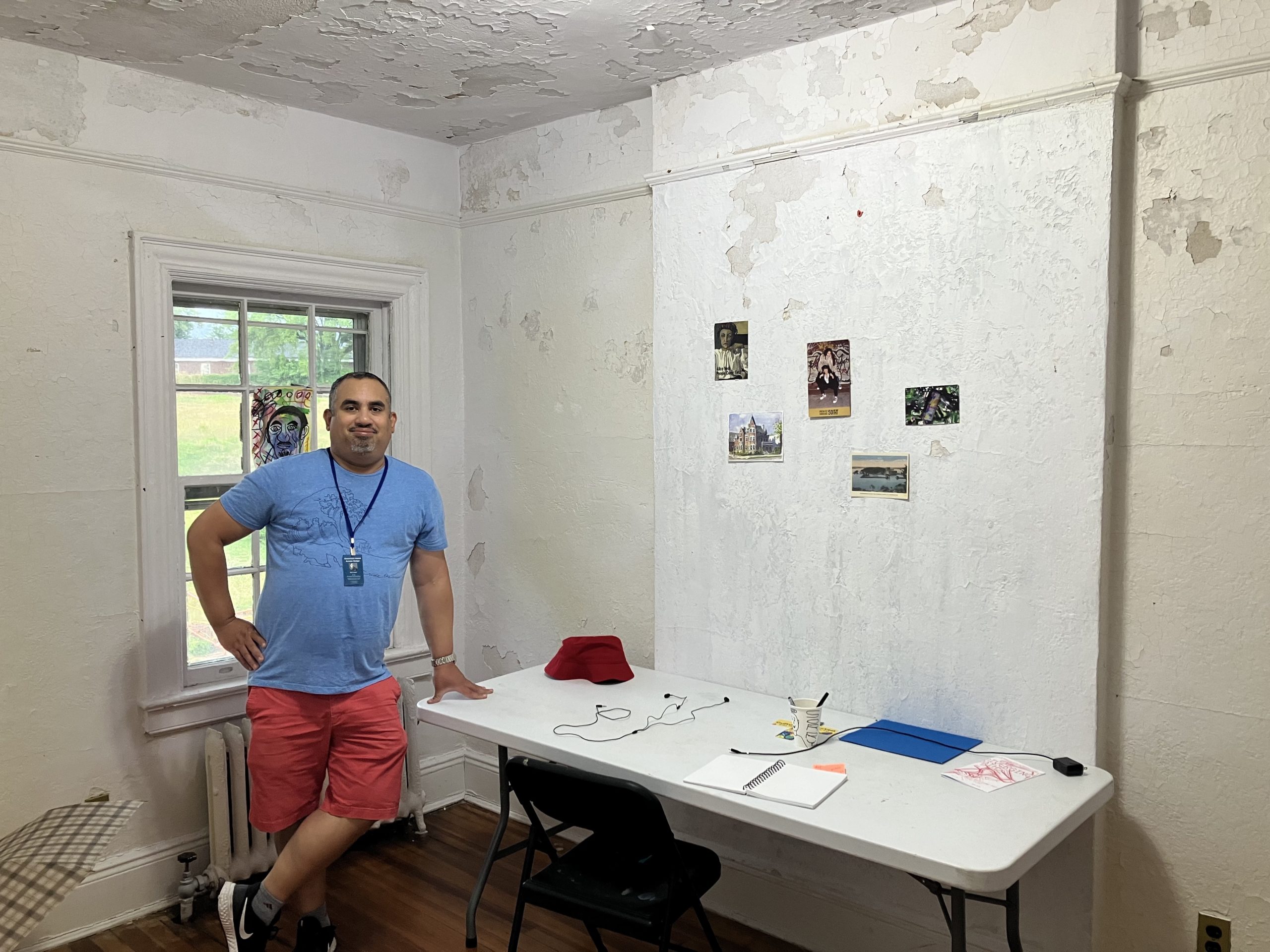
Ray Lopez in his studio on Governors Island
While visiting I noticed a few postcards on your wall including one of Alice Neel. Do you go to see art exhibitions often? Who are your favorite artists?
Glad that you have mentioned it. My favorite artists, past and present, are Frida Kahlo, Diego Rivera, Vincent Van Gogh, Francis Bacon, Claude Monet, Paul Cezanne, Henri Matisse, Pablo Picasso, Fransisco Goya, Andy Warhol, Keith Haring, Jean-Michel Basquiat, Rembrandt and well too many to list whose great works I have seen in museums and galleries, especially online. But also, my artists peers whom I have a social circle of friends and acquaintances. I have admired them for their artwork especially the ones that give me an inspiration of what their artwork is really all about. I am not naming names here in this article, but they know who they are. Even the non-famous artists that I really admired and gleefully enjoyed their works of art can give me an inspiration of what the next artwork that I will be making.
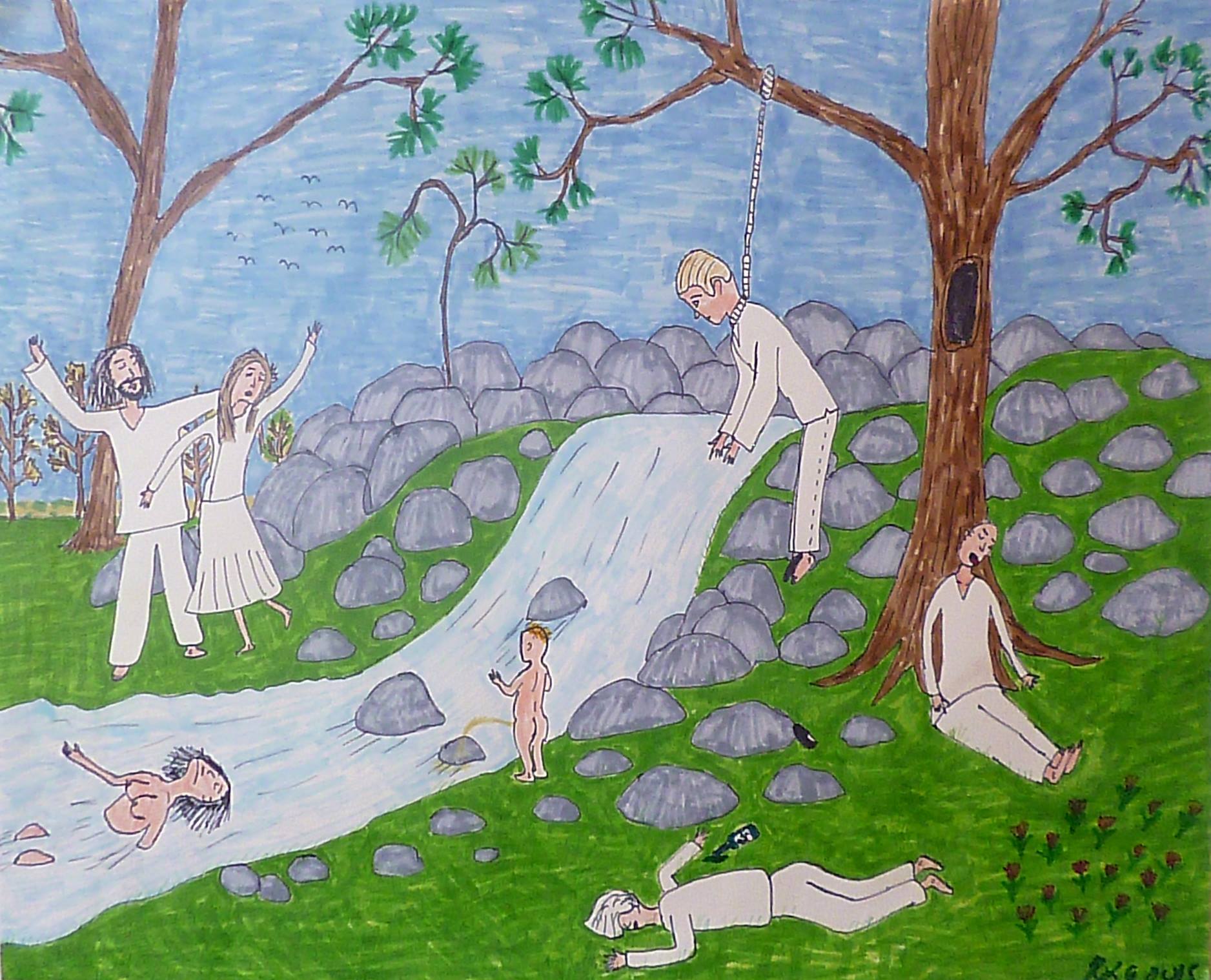
Ray Lopez, The Rise and Fall of The Cult, 18 x 24 inches, pen and colored markers on paper
What does making art mean to you? What what you do if you weren’t an artist?
Good question. Well, I really don’t know what art really means to me by making artwork. Let’s put it this way, making art is not like a hobby or doing it just for a living, it’s about having the passion and likability of making and transforming into something quite relevant and spontaneous for the artworks to come out to the best that I can achieve. If I have an idea of what artwork to make or what the subject matter is like, I just make it for the heck of it by making it into something that truly matters. It’s like directing a film. When I was younger my goal was to become a filmmaker by going to college and taking some film classes that I have not able to be complete but failed miserably and did not accomplish. But to make art is like directing a film on paper or canvas. And if I was not making art, I would be wasting my time or getting a full-time job which is hard to get and especially to maintain the position. Or do a different hobby like taking photos of scenery and stuff with my digital camera that I bought three years ago that I use to shoot some footage to make my small, short experimental films that can also be a source of artmaking.
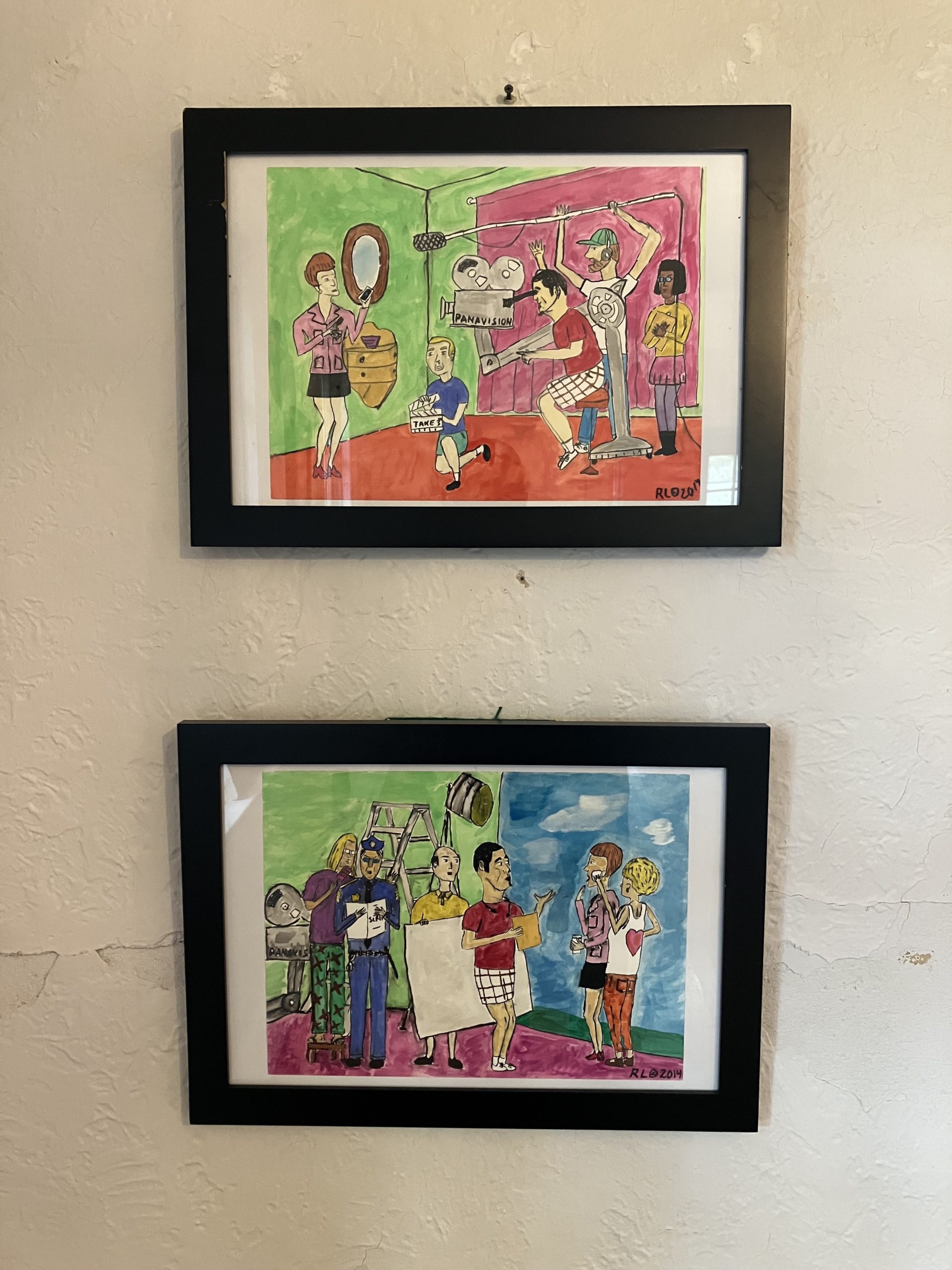
Installation shot of two works by Ray Lopez from “Works by Governors Island Resident Artists” at Fountain House @ Governors Island, House 410A, Colonels Row
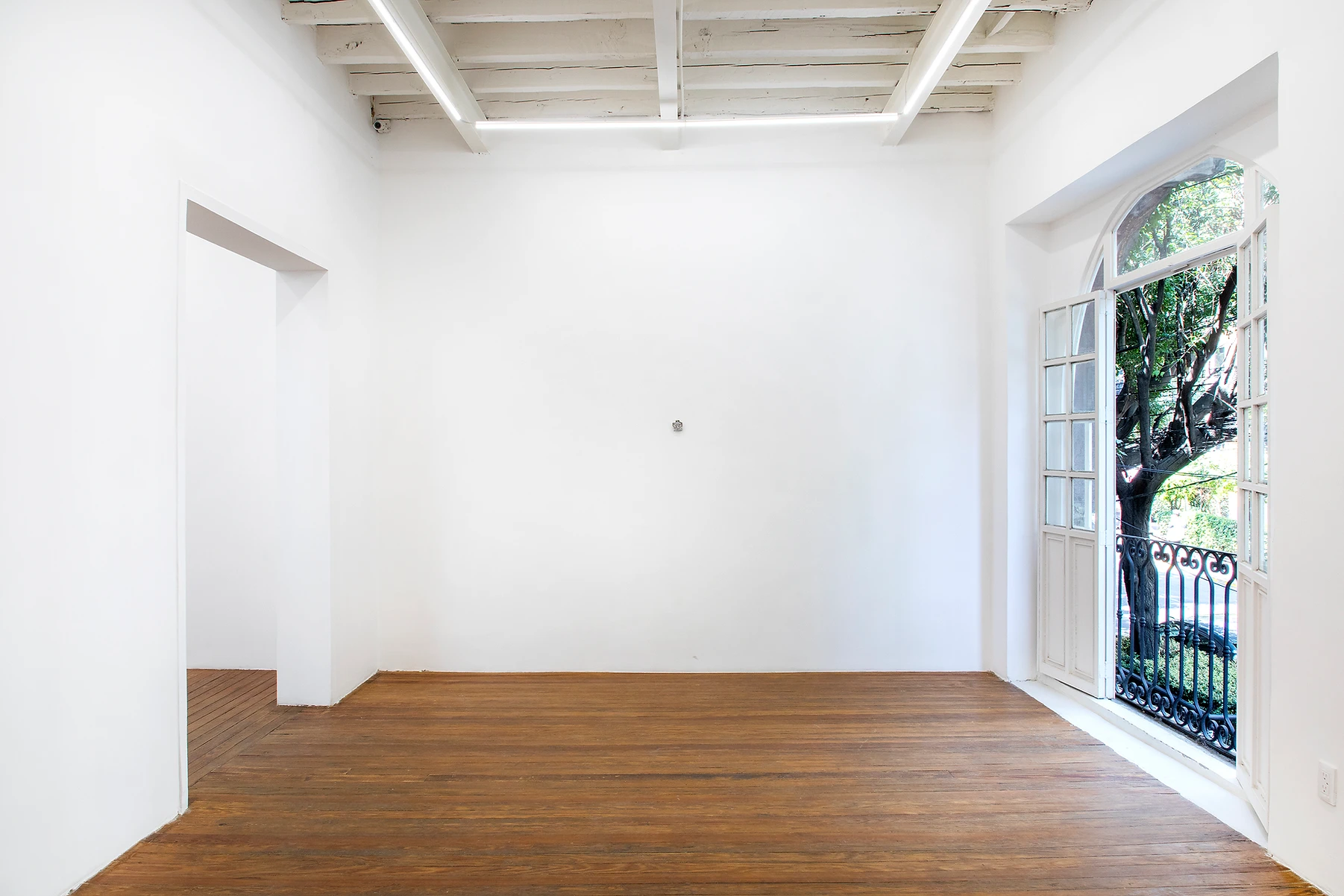
Michael Ross, installation view of Chortle, from the exhibition Time Repair, 2023, Galería Mascota, Mexico City, Mexico
Michael Ross (1954) is a sculptor based in New York City and his solo exhibition Time Repair is currently on view at Galería Mascota in Mexico City. At the time of writing this, it has been a few weeks since I had the pleasure of seeing his show. Its effects lingered on my visual perceptions days after. In an intimate yet spacious setting, Ross presents us with meticulous sculptures that seamlessly dialogue with the world outside the large, street-facing window of the gallery. Upon entering, I was greeted by the golden glint of War Film, which caused me to pause before moving towards the other six pieces that color the main room. Positioned in the entrance hall, the sculpture’s dual cylindrical adornments suggest we may approach the show in a cyclical manner. With every loop around the room, different scenarios played out between each of the wall-mounted sculptures, all under the watchful eye of the circular eponym piece in its central position on the back wall. Later on, after leaving the gallery, I recalled having peered up at Chortle through the window from the sidewalk below. Evoking a silhouetted landscape scene, its layers of flat, metallic pieces create a composition that subtly reflects the life around it.
In the following days, while staying with friends at the wooded western edge of the capital, I experienced other moments where the visual imagery of Time Repair would magically appear. On one morning drive down from the mountainous town of San Bartolo Ameyalco, riding in the back of the car, I noticed the blue banner of a preschool and its name Harlequin adorned with yellow ochre diamonds. This immediately brought to mind Ross’s Harlequin Trap. Seconds after, my gaze landed on majestic white fencing with rhombus shapes resembling the pointed pattern that wraps around the sculpture’s inner tubular form, and a path I’d been down before acquired a new delight with one visual cue playing off the next as we entered the waking city. On another evening, the rounded bushy forms of the unruly pine tree outside the guestroom window caught my attention after hearing its rustling in the wind just before a much-needed rainfall. It is with such moments that Ross challenges our impulse to stop the rust of time, inviting us instead to adjust our pace and enjoy the little details that unfold within life’s natural cycles.
Interview by Yolanda Fauvet
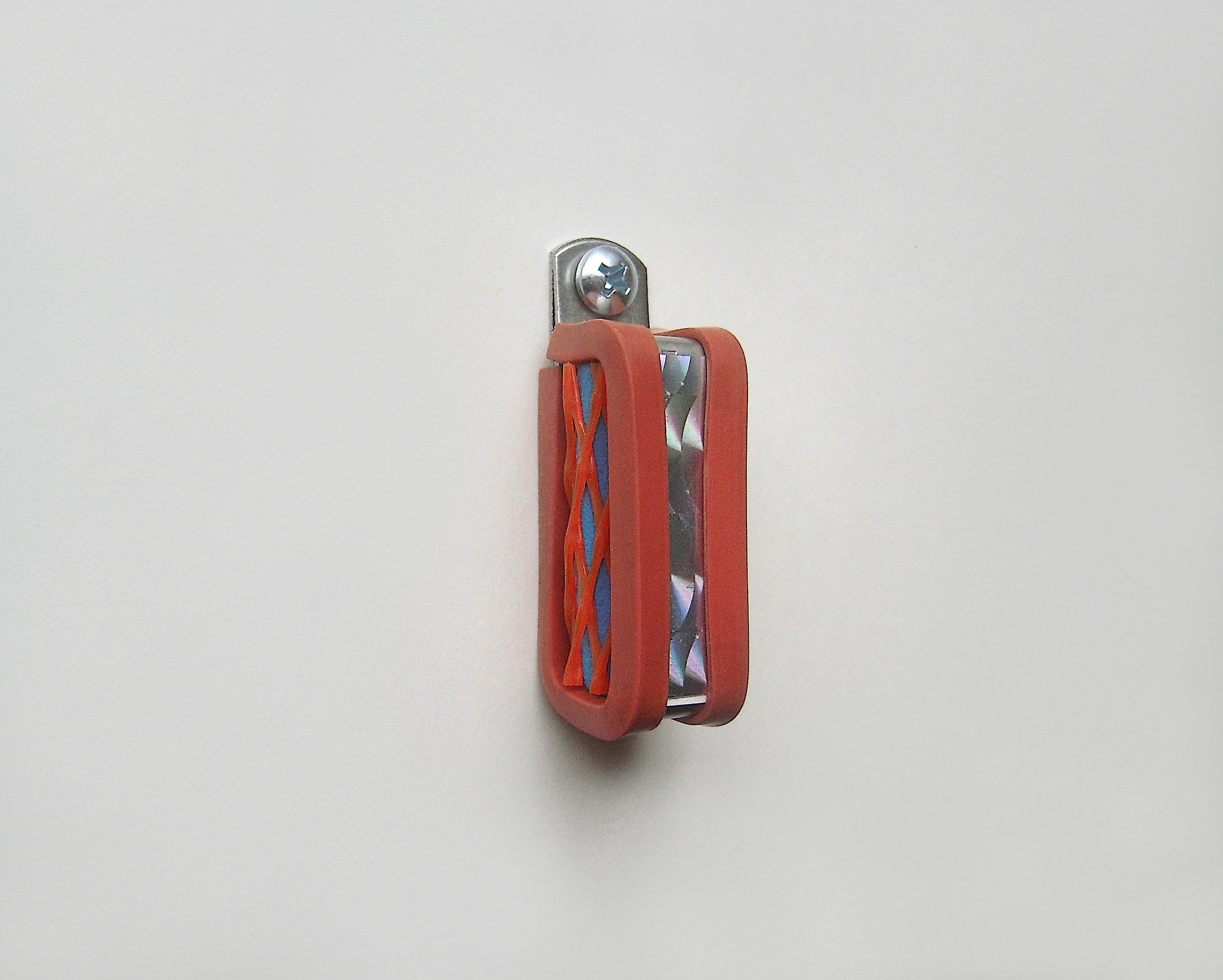
Michael Ross, Harlequin Trap, 2022, Metal, plastic, 2 1/8 x 5/8 x 3/4 in, courtesy the artist and Galería Mascota
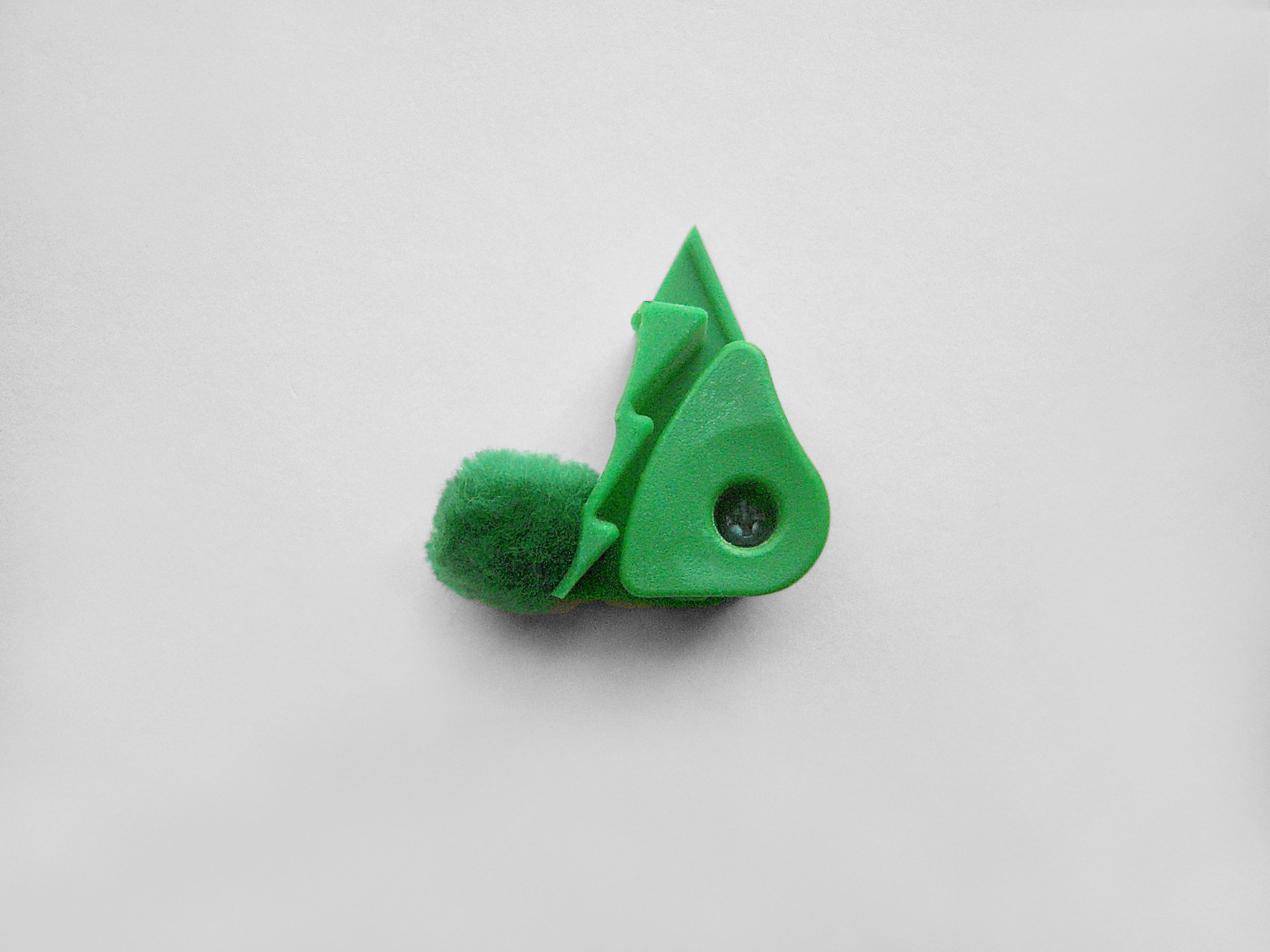
Michael Ross, Pine Listener, 2022, Plastic, silicone, pom pom, 1 7/8 x 1 5/8 x 1/2 in, courtesy the artist and Galería Mascota
Time Repair is your second solo exhibition at Galería Mascota, the first being in 2019 followed by a group show in 2020. Can you tell us about your beginnings at Mascota and what brought you to Mexico in the first place?
Javier discovered my work at the 2018 NADA Art Fair, Miami, where I presented 4 small-scale sculptures. Javier and Karla were very enthusiastic about this project, and immediately proposed an exhibition at their gallery in Mexico City. Knowing of that city’s vibrant contemporary art scene, I was excited to pursue this opportunity.
The titles of your pieces range from very descriptive to poetic and even playful at times. I believe this can create a certain approachability to your work for the everyday person who may happen upon it and am curious what role naming each sculpture has in your overall creative process.
Each work begins with an idea, and this idea is often written down first, almost like a “script” for each artwork. The script can lead to a title, though a small single scrap of bent metal can inspire both an artwork and a title. I think the approachable aspect you mention can also relate to my use of common materials and components which are transformed in precise and unexpected ways. My subject matter is without limits, so I’m able to connect to a wider audience.
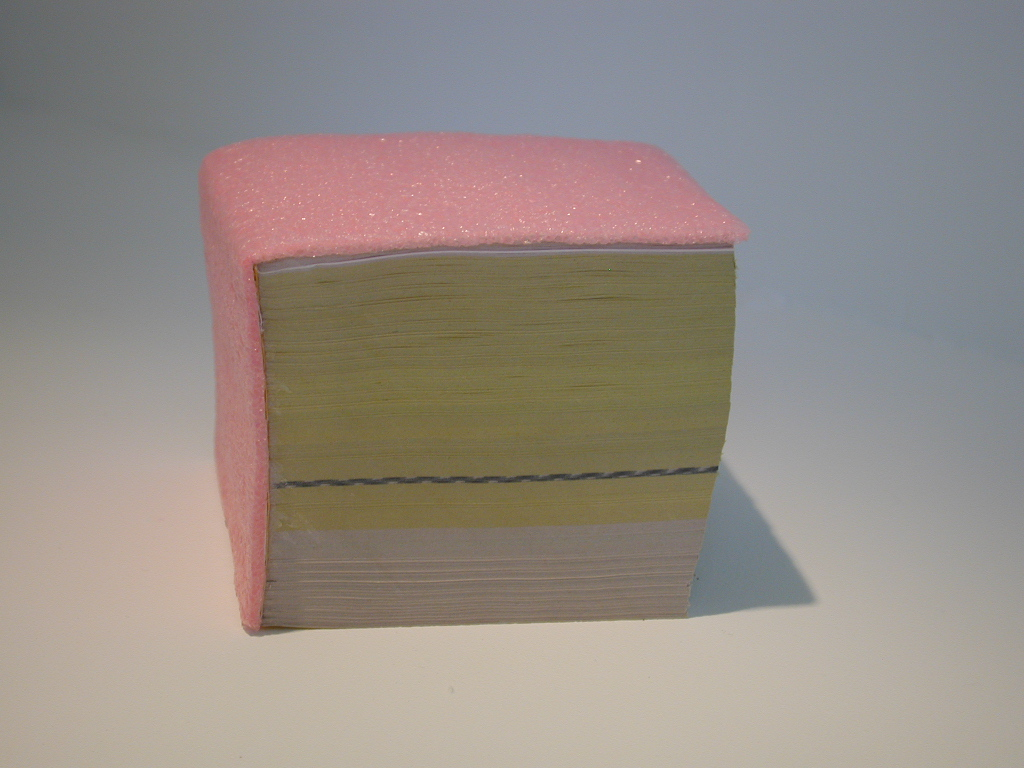
Michael Ross, Book Cake, from the exhibition Sogneurs de Gravite, Marcel at the Bit! (The Imitation of Marcel Duchamp), 2006, FRAC Languedoc-Roussillon, Montpellier, France
Please, talk to me about Book Cake! As soon as I saw this scrumptious piece in the 25th edition of zingmagazine, a big bubbly smile came across my face and my senses were immediately transported to the visual language of many of the NYC artists I’ve seen at the Dikeou Collection in Denver. For someone who didn’t grow up in New York, I’m wondering what major visual themes you think tie NYC artists together?
Book Cake was a sculpture I originally presented in the 2006 exhibition Sogneurs de Gravite, Marcel at the Bit! (The Imitation of Marcel Duchamp) curated by Emmanuel Latreille, which took place in Montpellier, France. Book Cake was a Duchampian gesture combining two loves – books and cake. I reimagined a chunk of a NYC telephone book and utilized a slice of pink plastic foam as frosting. Major themes tying NYC artists together? Well, today the artworld is big business, and I’d say ambition is the major thread binding it all together. It was a different kind of scene when I moved here in 1979. The expectations were different.
Thinking back to all the group exhibitions you’ve participated in, it seems the practice of incorporating miscellaneous and found objects in your sculptures has lent to being classified under an array of genres and art movements, including fluxus and bricolage. What has been your favorite grouping or the most memorable context your pieces have been shown in?
A particularly memorable context took place in 1999 at the SMAK museum in Ghent, Belgium, where my sculpture consisting of a small wall-mounted thimble containing dust, faced-off in the same room with stacks of giant lead books by Anselm Kiefer. There were no other artworks in that room, so it was a real David and Goliath moment.
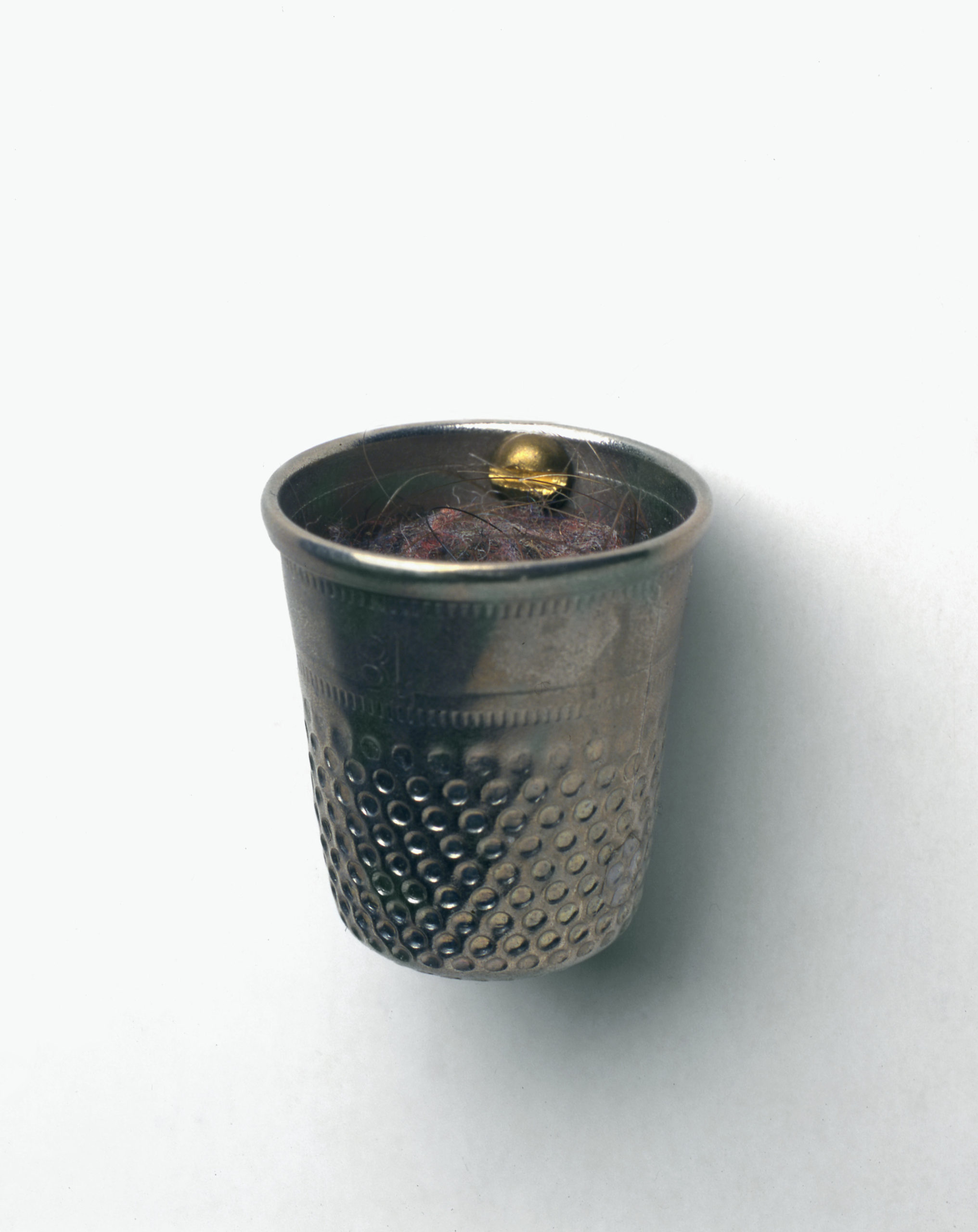
Michael Ross, The Smallest Type Of Architecture For The Body Containing The Dust From My Bedroom, My Studio, My Living Room, My Kitchen And My Bathroom, 1991, dust, metal, 2.3 x 2 x 2 cm, Collection SMAK, Gent, Belgium
Did you grow up with art in your life?
I grew up in Buffalo, New York. Living with my grandmother, there was no real art in her home, but I did make countless visits to the Albright-Knox Art Gallery on the other side of the park. This is where I first saw Van Gogh, Soutine, Gauguin, Ensor, Ryder, Duchamp, Nevelson, Kline, Marisol, Johns, and Rauschenberg. These early sojourns were my self-education in art before heading to art school. The museum also had a very special room devoted solely to the works of Clyfford Still, whose fierce independence I greatly admire.
Time Repair opened at Galería Mascota on March 25 and will be on view through June 5, 2023.
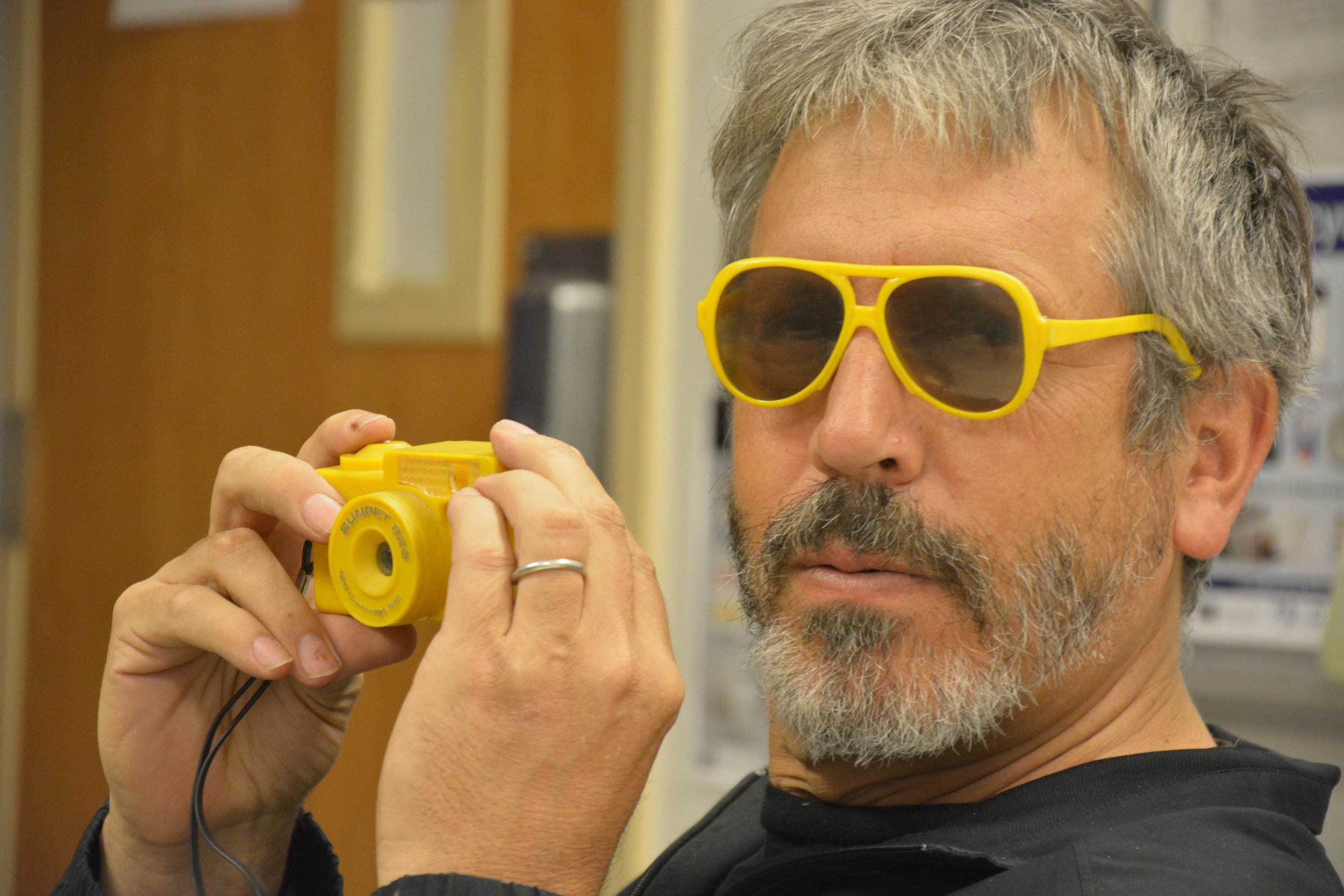
Sunspet camera and matching sunglasses, photo: Carol Dass, gift of the artist
Mark Sink is a native of Colorado and has left a giant imprimatur on Colorado photography—as a photographer, organizer of salons, historian, magazine contributor, editor/publisher and founder/curator. His retrospective at RedLine Denver is an astounding look at his own personal history—not only well beyond his own life as a photographer via his community impact, but also his unique position as a descendant of the some of the most important pioneers of photography in the America, including his great-grandfather James L Breese Sr—the man responsible for the daguerreotype process being implemented in the US after he saw Daguerre speak about the process in Europe. Breese was also one of the visionaries of the Camera Club of New York (1897-1903). In Mark’s own practice he embraced the photographic technology of his early days the ‘60s/’70s/’80s—like xeroxes, the Diana camera, polaroid—to the present, recording his vision/his life as well implementing other more historic technologies like the cyanotypes and collodion wet types, among others . . . And Mark has an important history with his involvement with magazines . . . In both Colorado and beyond, as well as salon culture . . . What follows are responses about Typed Live, Excuse Errors . . . A Mark Sink Retrospective. On view through April 9th, 2023 at RedLine Contemporary Art Center, Denver, CO. Artist’s walk and talk, April 1, 2023, Noon-1pm.
Interview by Devon Dikeou
The exhibition at RedLine is organized in groups and then subgroups within . . . Please talk about the organization of the exhibition . . . And specifically the influences and circles that encompassed your rich photographic heritage . . .
Starts wayback machine . . . my roots . . . and takes you through all the connecting dots that formed me . . . I was calling it my tree of life but that was too corny . . . but I love trees . . . I was an arborist in high school and college. So it’s an inner connection of family history and community and art.
I have been wanting to tell the story of my crazy family history for some time. Mom’s Breese side starts way, way down there in NYC . . . with NY harbor master Rev Sidney Breese buried at Trinity church in the mid 1700s. My dad is from Ohio.
The show starts with painter and inventor Samuel Finley Breese Morse who took one of the first photographs in America. He is considered the “Father of American Photography” and taught Matthew Brady how to make images. His nephew James L Breese was the “primary inspiration” of the Camera Club of NY . . . His late-night salons were a wild, wild forward bunch. Scientists, inventors, leaders of women’s suffrage, queers, black musicians, female modern dancers, painters and photographers . . . Remember this is the 19th century . . . His daughter Frances “Tany” who I’m CRAZY for was an early critical modernist, abstract painter, raced cars, and hung out with a queer crowd . . . She opened NYC’s first modernist interior design stores, built the first modernist house architects’ row in Bridgehampton, NY . . . on and on . . . dumped her banker husband and married a beautiful black Haitian man . . . that was an eye opener for Southampton society. She taught me how to swim in the ocean in 1967 the same month Andy Warhol and crew stayed there filming The Loves of Ondean. We signed the guest book right next to each other! Andy was VERY surprised when I told him.
Breese’s son James L Breese Jr (my grandpa), inventor and engineer, flew across the ocean eight years before Lindbergh (May 1919)—front page of The NY Times “First Across” big hero of the time, ticker tape parade and all . . . funny how history can forget . . . Well, JLB was not long for NYC being that he married an Irish redhead Maggie Malone . . . Old Aunt Pussie (yes, her name was Pussie) threw him out of the family and inheritance. He eventually landed in Santa Fe, New Mexico, during the depression . . . bought a ranch on Upper Canyon Road . . . welcomed by other local easterners Gustave Baumann and dashing painter Randell Davey—both very close to the family . . .
Believe it or not this last summer a wheeler/dealer secondhand store picker in a Salvation Army in Santa Fe found 12 albums, full of 2,700 images of our Breese family NYC to Santa Fe 1880s to 1950s, Wright Brothers first flights . . . JLBs fight across the ocean (taken with his camera!) and the Santa Fe art scene starting in the 1920s . . . Mind-boggling . . . oh and the cars and cars and more cars . . . The Breese’s beloved cars . . . part of the reason the family threw them out . . . Mechanics were not proper . . . especially woman driving!
It’s hard to accurately tell the crazy story of how all these things came together just this last summer . . . magic really . . . First was the very unexpected discovery of the Breese family albums 1880-1950s. Secondly, right at this time I had some automobile historians doing a deep dive story on Breese from the point of view of his cars . . . This is when I came to find out the Breese brothers developed an aluminum race car for The American Sportsman. It was called the BLM Runnabout (Breese Lawrance Mouton), Henry Ford even inquired about it at a New York auto show in 1907 . . . Anyway . . . I found a French Lithograph of an advertisement of the car from a historical foundation in Paris and had the high-res scan sent . . . for I was extra excited the model driving was my aunt Frances (Tanty) racing on cliff edge . . . and if that wasn’t enough, to my mind-blowing surprise, when high res file came through found the artists signature was Frances’s close friend Otho Cushing . . . a super queer artist sidekick of Tanty and Breese Sr.
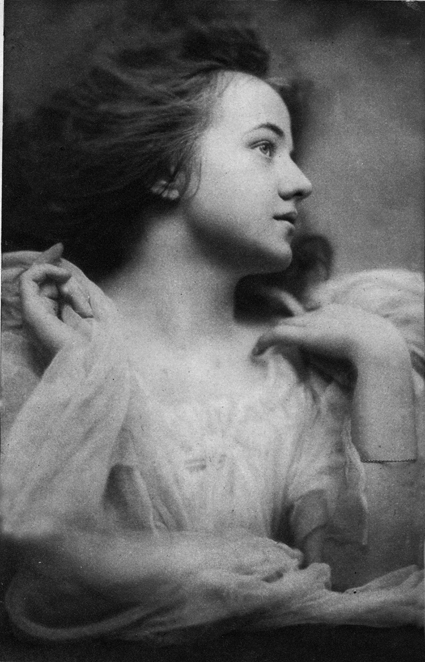
James L. Breese, Zephyr, The Carbon Studio, 1897, courtesy of Mark Sink
And the Triumph . . .
Cars are in the Breese line from the very start . . . from the first car races ever (Ormond Beach) . . . and co-founding of the AAA. Coast to coast road trips in the Model T. With my Triumph, the story goes—I had ridden my bicycle down to Santa Fe to help up my reclusive aunt NC Breese (mom’s sister living in Grandpa Breese’s house on Upper Canyon) . . . and in the garage I found under a dirt-laden blanket a rare first edition Triumph TR2 . . . love at first sight . . . it took the whole summer of slow, hard work to talk my aunt out of it . . . I went to town got a battery . . . filled the tires with a bike pump . . . and . . . Like in the Woody Alan movie Sleeper (with the VW he found in the cave) . . . the car started! It was a very exciting moment driving that car back to Denver.
Within your work is a real sense of printed matter/magazine as part of your practice, from your work on Criss Cross magazine—Clark Richert’s publication to your own publication The Codex (with Eric Havelock-Baille and Reed Weimar, 1983-1986) which is simultaneous to Parkett and certainly Interview (all early ‘80s) . . . please give us an insight to how publications reflect your practice. I’m so grateful to always see these histories of magazines . . . Because as Codex is so aptly titled, for certain periods of time they are our history . . . Our codex.
Yes, The Codex . . . the first bound book . . .
Many over-the-top firsts happened for me while at Metro State College. What a great time for many of us and art in Colorado. This is when tuition was just a few hundred dollars (1970s/1980s). You could easily work it off in “work-study.” One of many jobs, I worked in the photo lab cage. Working in the photo lab was good timing because we did lots of all-nighters in the lab making wild and experimental prints and just barely getting cleaned up before the first morning classes started. Early days of video . . . This was the time of our wild all-nighters. I was always in trouble. Blamed for breaking video equipment. A group of us were experimenting with making videos with the manual f-stop and shutter creating wonderful effects neg to positive . . . I found I could then project the negative capture with a cardboard box over the monitor/TV and with a toilet paper tube as a lens projects onto large color photo paper on the wall. Wonderful results (as published in Clarks Colorado Arts Newspaper). I have all these videos and prints. A print from my video still projector is up at RedLine now.
The first Codex was conceived in 1982 and was surely one of the first correspondence art publications in the region. A majority of the publication was xerox and photography related, in the mid 1970s to early 1980s. I was doing a lot of Xerox copy art at the Auraria campus, produced in large out of the Auraria Campus library. I would unplug the xerox machine and roll it into the small study rooms. There I would set appointments in my new private studio office and make portraits and figure work, while also making florals and still lifes on the glass predating today’s scanner art. Out of this came one of the first Xerox as fine art shows in Denver at Phil Bender’s Pirate Art Oasis, circa 1981. This was my first venture out in the real art world.
I have several hundred Xerox street handbills from this period. Phil Bender’s Denver DaDa Club, The Pirate Art Oasis, and all the rock and punk bands that played the Denver ‘80s music scene. I have a Dropbox link of it all for those interested DM me. I did a paper called, “Did DADA die?” comparing street punk art hand bills and posters to DaDaCabaret Voltaire era (1916) hand bills and posters. Leading up to this (1977-78) Clark Rickert and others in a group called Criss Cross were publishing an artist I have great interest in, Ray Johnson, and EF Higgins who made Xerox correspondence art. This was published in Criss Cross magazine out of University of Colorado, Boulder. I have been doing a deep dive with Ray Johnson recently, and Andy Warhol who was also experimenting with Xerox at this time. And around 1982-3 Jean-Michel Basquiat was using Xerox copiers.
In Sept 1981 I met and became friends with Andy Warhol at Colorado State University in Fort Collins, Colorado. He hired me on the spot. I was on Interview magazine’s masthead the next month. I also worked for Jean-Michel till his death. This explosion of NYC high art excitement was brought back to school and into the darkroom to video art and projects like The Codex.
I was very interested in the concept of correspondence art and publishing it. Greatly inspired by The International Society of Copier Artists (ISCA) copy artists and mail art . . . and Art Life out of UC Santa Barbara. With the “Lets Do It” inspiration of artist friends, Eric Havelock-Bailie and Reed Philip Weimer, the codex was formed. The Codex was a portfolio, a book, a periodical of entirely original work. Anything in multimedia was accepted, copy machine art encouraged along with photography and printmaking and the written page . . . poetry etc. The work could be taken out and exhibited as an exhibition. Purchasers of the book were encouraged to frame the original work. It’s filled with some of Colorado’s finest talent. Four volumes were published from 1983-1986. The Codex has been taken in by several major museum bookstores including the Denver Art Museum, The Guggenheim Museum, and fine art bookstores like Printed Matter in NYC . . . Franklin Furnace and City Lights in San Francisco. From the beginning, the primary inspiration of the Codex was from correspondence with the ISCA—wonderful typed letters and mail art sent from Louise Neaderland who encouraged me to continue my copy machine art and publication ideas.
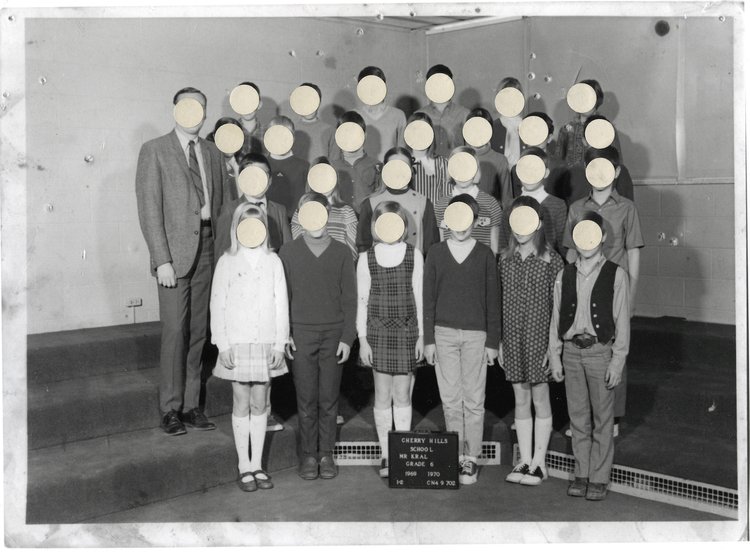
Mark Sink, Third Grade and Dots, 2021, silver print with vinyl dots
And you hung in the grooviest circles in downtown NYC, as Colorado correspondent for Interview . . . Talk about ALL that was . . .
Well, that’s a book in itself . . . the ‘80s are so hot right now . . . who woulda known? . . . Early ‘80s and arriving at the Factory I first thought Andy was a bit washed up . . . sort of gone model Hollywood glamour, and all of his new print series done out-of-house—contracted with a commercial screen company . . . Jean-Michel was also not in very good shape in the mid ‘80s . . . It was not as glamorous as many make it out to be . . . I was just a worker bee, there with my lens and film . . . a fly on the wall watching the excess play out like some surreal play . . . always lots of drama . . . Like today still there is a big gulf of the have and the have-nots . . .
It was surreal and empowering and beyond belief for me in my early twenties . . . Andy would send me to shoot famous events like Denver’s Carousel Ball . . . Andy LOVED my shots of all the stars. During my early, crashing-big-events days in the early ‘80s, billionaire industrialist Marvin Davis who owned 20th Century Fox had his contract stars come to his hometown Denver for a great ball his wife put on. I just jumped the rope and got right in there, right in their faces, a foot away, with a 50mm lens . . . bright flash boom . . . shot many dozens of stars and politicians, agents . . . and worked my way right in and up into the VIP room, I said Andy Warhol sent me “Interview Magazine” . . . With the press outside I hung out with Donald Sutherland and the Dynasty cast . . . Dolly Parton super-agent Swifty Lazar! . . . Thousands of images. Andy was very jealous. A few will be in my retrospective. I have other nutty stories of the Davis family, Nancy Davis is my age. I wonder what she is up to . . .
I helped shoot parties of new advertisers in Interview and at the same time opened new accounts to distribute the magazine and was always, always looking to land ads. I assisted Chris Makos with an interview photo series “New Faces in the Rockies.” I was hoping New Faces was going to become my own column . . . but I moved to NY instead. I soon realized the genius in all of Andy’s glamorous ventures . . . and his Andy Warhol TV and Love Boat . . . it was art of our times . . . My love and respect for him re-emerged before his death.
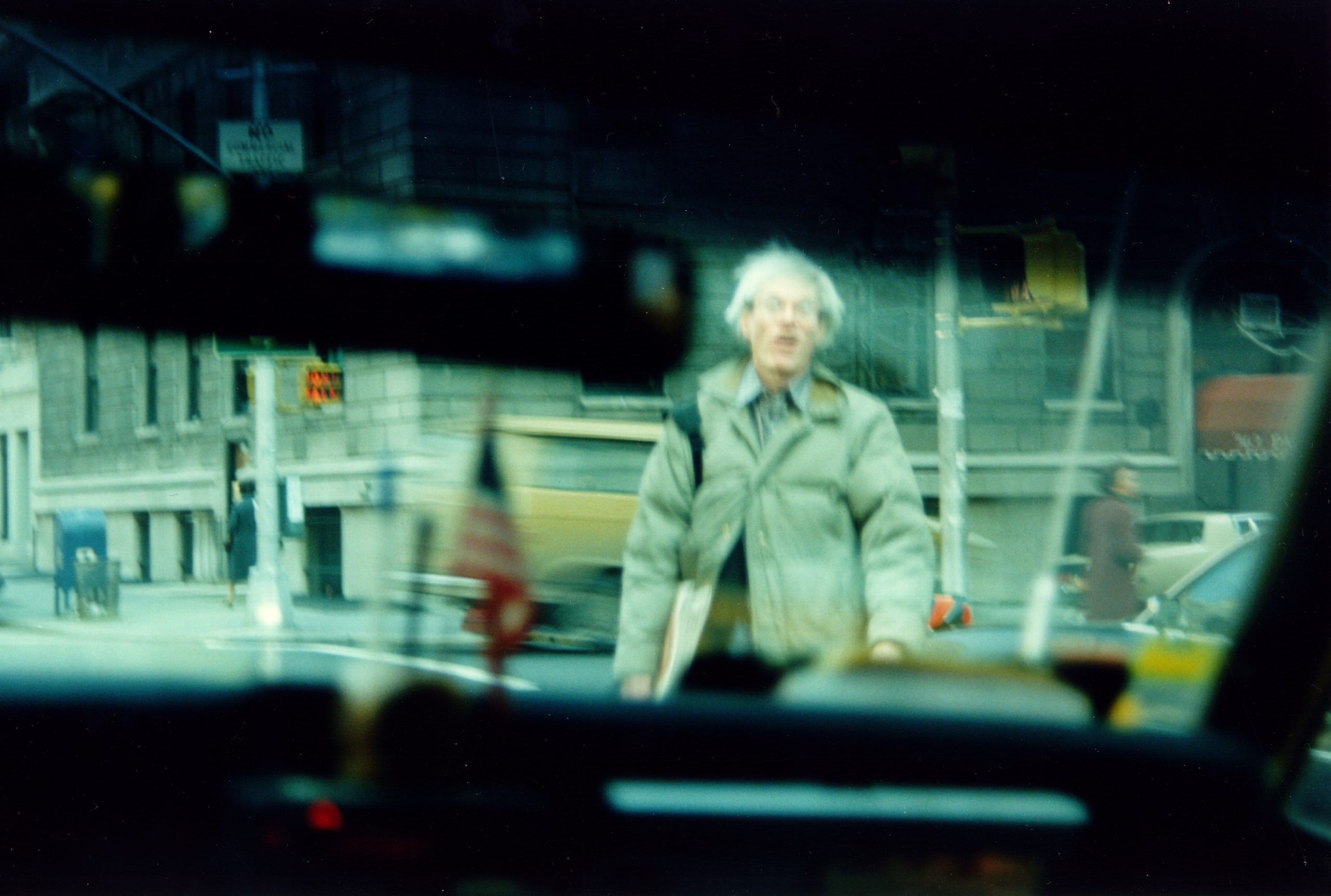
Mark Sink, picking up Andy to go on a date to the Odeon, March 1982, pigment print from Kodachrome slide
I am grateful that I got to know Jean-Michel and call him a friend. He was a very complicated soul and that is clearly expressed in his work. He is one of the most pure, free and unique artists to emerge out of NYC in 1980s.It really hit me in 1996 the major impact on our creative society JMB left us with when I went to a giant shopping mall mainstream movie theater full of people to see a big-screen movie about the life of a young black artist in his twenties. It’s amazing to see how his spirit and inspiration has carried on into the millennial generations of young emerging artists today.
I first became fully aware of JMB when visiting my friend, photographer Chris Makos, in 1981. Chris did a studio portrait of him holding a world globe on his shoulder and he purchased some of his drawings and prints like “famous negro athletes.” I remember Chris telling me this guy was rising really fast. In the early to mid ‘80s, I had a growing friendship with Andy Warhol. Once I called the Factory to speak with him about an upcoming trip to Colorado. Then front desk secretary who liked me, Brigid Berlin, patched me right through . . . He told me he was painting with Jean-Michel . . . I remember saying to say hello . . . I have that conversation taped I should check what else I said.
I first met Jean-Michel when I was visiting NYC and staying for long periods at the Hotel Chelsea to be near Andy starting in 1981. Stanley the manager called me “Alfred Stieglitz ” because I was always taking pictures. My first meeting with JMB was girlfriend Lynne Ida and artist friend Robert Hawkins. We were visiting a friend, actor Danny Kerwick, a bartender from Denver (from my days at a Jack Kerouac/Neil Cassidy hangout called My Brothers Bar). We met Danny at a small restaurant bar the Great Jones Street Cafe where he worked and managed. We closed the bar and stumbled out locking the door into the early morning. As we walked out Robert Hawkins saw someone across the street and yelled, “Jean!” It was some kid getting out of a limo . . . He waved and invited us over and into the studio door (later found out it was a former carriage stable owned by Andy Warhol). I had no idea who he was. Robert stood talking and I was looking around the messy painting studio. I asked if I could look at the paintings lined up in the racks nearby. As I pulled them out I slowly realized who it was . . . Robert was mortally embarrassed as I came to the realization we were with an art superstar . . . saying, Oh, you’re Jean-Michel Basquiat! . . . I, then star-struck, shamelessly asked if he would draw me something—which embarrassed Robert even more. But Jean-Michel loved it . . . he said sure and started with ballpoint pen a tail but then grabbed a long paintbrush dripping with thick red paint out of a coffee can and proceeded to paint a scorpion, then wrote Scorpio in the middle and then crossed it out and handed it to me. It was dripping with fresh paint so he took it back and printed it down the lower right corner of the canvas that we were looking at. (to dry the paint faster). I have always looked for that canvas with the lobster print on it but have yet to see it in any books. He then invited us to go out to the Brasserie a 24-hour haunt in the famous Seagram building uptown (it was around 3am). We jumped in the limo still sitting outside and had a ruckus ride up . . . smoking pot and drinking more . . . coke very well could have been passed around also. I was getting pretty intoxicated and blurry. The driver I believe maybe was the artist Shenge Ka Pharaoh who I am friends with today (on Facebook). I wish I remembered more about the breakfast and return home . . . I presumed that Shenge dropped us home at the Hotel Chelsea. Thank heavens I took pictures it probably would have all been lost to partying induced memory-loss.
I officially moved to NY in 1984 into a great stone flatiron building on One Hudson Street in Tribeca, a block away from the famous restaurant favorite of Warhol and Jean-Michel, The Odeon. I was working for a publisher friend, Gerald Rothberg, whose employment made the move to NYC possible. (Via shooting for Circus Magazine and MGF, Men’s Guide to Fashion). In the following years I would see JMB around town at art openings. At this time he often looked kind of angry, wired and disheveled—not wanting to be there or not have anyone approach to talk to him. A few times I saw him out at popular artist-favored restaurants. One time he was at a big table with the most beautiful girls in the room fawning over him. I was jealous. Mostly because I was broke and did not have a girlfriend at the time. It was hard for many of us struggling to survive at the time watching a friend become rich and famous and move on to a new glamorous orbit of beauty and celebrities. It was a left out feeling.
He came to a couple of openings at the Patrick Fox Gallery north of Houston (NoHo) where I worked and had a studio I dug out in the basement. I photographed the work and openings there for several years. It was across the street from Artforum magazine which was in the amazing white Louis Sullivan building. The gallery was located at 56 Bleecker . . . a 1700s brick farmhouse I was told was the home of Colonel Bleecker. I have great memories of a potbelly stove and giant skylighted tin ceiling and wall covered room called the Tin Room in the back of the gallery that was a hangout for many 1980s rising art stars and drug addicts. Also, critics like Rene Ricard and Cookie Muller and others. I did many thousands of portraits of them and the artists in that beautiful space. I photographed Jean-Michel with his girlfriend Suzanne Mallouk during one opening. He lived just around the corner on Great Jones Street. I would see him walking around time to time. He’d wave and smile.
Once at a dance party in the basement of downtown restaurant club called Indochine on Lafayette Street I was dancing with my girlfriend Pam Edelstein. He saw me waved. I was excited he made the effort to come over to talk with us. We talked about building a house with adobe mud and if I would help him (I told him I had just returned from Santa Fe building an adobe house with my sister). He scribbled his number on a napkin and said to come by. Little did we know I would be coming over many times to photograph his work later that year. He then lit up a giant cigar-size marijuana blunt dripping with hash chunks and handed it to me through a giant cloud of smoke . . . then he proceeded to dance off with my girlfriend. The night ended with jealously poisoning my blood as I watched my girlfriend denying his advances to leave with him.
Andy Warhol had died Feb 22nd, 1987 . . . some days after I saw Jean in the street . . . we stood together in the middle of Houston Street waiting for cars to pass. He was very angry . . . he never worked out his anger and the fallout he had with Andy after the collaboration and show at Tony Shafrazi’s gallery. It was poorly received and he was pissed cause Andy said he was helping Jean’s career, and Jean felt he was helping Andy’s sagging career. Standing there in the traffic he told me he was really, really mad at Andy and that he was freaking out cause he never got to resolve it.
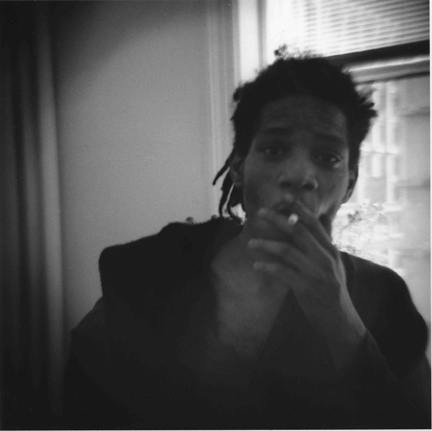
Mark Sink, Jean-Michel Basquiat smoking at the Vreg Baghoomian Gallery, September 5, 1988, silver print
Around this time I started working photographing artwork and events for the Iranian art dealer Vreg Baghoomian. He was a cousin of the famous dealer Tony Shafrazi who infamously spray-painted Picasso’s Guernica at MoMA. I had to carry big eight-foot-tall priceless Jean-Michel and Cy Twomblys and other canvases out into the windy crowded sidewalk for several blocks and back . . . just for viewing (so they would not to be seen in each others’ galleries). Vreg liked me for some reason. I was told he was the accountant or finance minister for the Shah of Iran in the ‘70s and had to flee. He had intense anger streaks. I witnessed many outbursts and I lasted through two full staff firings. Vreg was very frustrated with Jean-Michel leading up to the last show. He kept having to send him large amounts of cash . . . and then he did not hear from him for weeks at a time . . . He was panicking when it was getting closer to his show . . . I believe he was first in Europe than in LA hiding. But the paintings made it there that spring and the show got mounted . . . I was photographing them on my old school large-format view camera (8 x 10″ transparencies) when Jean dropped in. His painter friend Ouattara Watts was there also. I asked him to sign the exhibition poster . . . he drew a mouse with a lightning bolt from the eye to the words “Terry Lennox”. I have never known what that refers to maybe the pretty female local artist named Terry Lennox? Or a good fit is a movie The Long Goodbye. A murder mystery story of a character Terry Lennox who had gone missing and was murdered in Mexico. I wish I had asked him. I photographed him drawing on the poster and hanging out together with Ouattera. This was April 1988.
I photographed his famous “Amateur Bout” notebook of words at the studio and various other drawings. He often had lots of other drawings and things he wanted to be photographed and I would stay longer after I shot the major paintings . . . he once offered me a drawing for my extra time working . . . I declined . . . (a top life regret). I told him I wanted to build up credit for a small painting.
The most well-known image I took of him was in June 1988 . . . I was documenting the exhibition before it came down and he happened to drop by. I had my large view camera out . . . and asked him to stand very still in front of the canvas. He by chance happened to stand in front of the words, “Man Dies”. On Friday, August 12, Jean-Michel Basquiat died in his Great Jones Street loft at age twenty-seven.
Looking for Leon . . . Again here I go digging into my ‘80s tubs, dusty boxes of contact sheets and Kodachrome slides looking for the moments with a lost hero.
Always loved this line—“My eyes are starving for beauty”. André Leon Talley, Jean-Michel, Grace, and Andy, it’s hard to believe I knew them, hung out and even dined on occasion. It’s kinda out of body looking back now. In the mid-80s I was very lucky to dine one evening with Leon at the marvelous surprise performance restaurant Raoul’s in SoHo. Senior Vogue editors (Elizabeth Saltzman and Jackie Spaniel) had sent me. I loved and frequented this art-filled haven. One night was with publisher friend and employer Gerry Rothberg of Circus Magazine and Men’s Guide to Fashion. We witnessed a performance of the shower scene from Hitchcock’s Psycho by the owner. My solo sitting with Leon . . . he gave me a moment . . . a long look hello but I never made it in . . . I am just too slow to match his fast wit. We talked of Warhol and how Andy had helped early working for Interview Magazine. I believe the Vogue girls also knew I had crossed paths with Diana Vreeland thanks to my superhero Factory friend Fred Hughes. Fred, the wizard behind the curtain, oversaw much of Andy’s Factory empire. I visited Fred often, he took me to fashion shows and introduced me to princesses in the kitchen of his home (Andy’s first home). He loved my old NYC family stories more than anyone I ever met. I had shown Fred my great grandfather’s 1890s Carbon Studio portrait album at the Factory. He jumped out of his skin excited of the old New York gilded age sitters before him . . . This is the kind of thing he loved, old old money. He knew everyone. The maiden names, “That’s Winston Churchill’s mother! That’s the Posts and the Parsons! And Miss Emily Hoffman!” He picked up his antique black dial phone and called up Diana Vreeland and left a message. “I have a young man here with beautiful pictures of your mother you must see, can I send him over?” (I had no idea Miss Hoffman was Diana’s mother). Later in the day when I was back down in NoHo at the 56 Bleecker gallery the phone rang in the Tin Room . . . this was a great moment I will never forget in front of the gallery crew . . . “Mark, Diana Vreeland would like to speak to you . . .” We set up a presentation and to my surprise, she asked to use the images for the Met Gala. I have a memory of asking a stupidly low price. But I did get a ticket to go. Sadly, she did not think highly of my great grandfather, and abruptly hung up the phone once. He among other things uncivilized was credited by some to be the fall of his close friend Standford White. Soon the studio and its Carbonites came under fire as a secret place of lascivious intrigue . . . that’s another chapter . . . the epic murder of Stanford White.
I have written a lot about Andy. How we met and my time with him. How he took my calls and took me on a few dates. How I nearly killed him by accident while snowmobiling in Aspen. How he changed my life. I was kind of a depressed kid afraid of the world. He opened the door of belief in myself. Words can’t really express how lucky I am to have known him and called him my friend. The Factory kids were pretty petty and evil to me. When I ran an errand for Andy they gave me the wrong address so I would be hopelessly lost . . . upsetting Andy it took so long. They also told me to NEVER accept a gift from Andy . . . that it was just a test of ladder climbing loyalty or not . . . so on my birthday Andy offered me a gift from the “gift closet” I turned him down . . . he was sad . . . he told me later when I told him I was being pranked he said, “Oh good, I thought you did not like my work!” I did not get another chance.
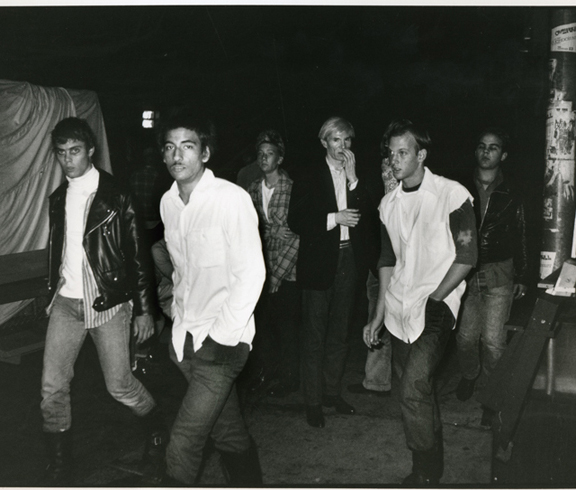
Mark Sink, Andy in LA at Danny’s Dogs, 1981, silver print
Artists friends around the Patrick Fox/56 Bleecker Gallery. I hope to do a book about the Tin Room:
Carl Apfelschnitt
Was a brilliant painter that I photographed work of in trade. He died of AIDS in the late 80s. He describes his hands-on, raw approach to abstract painting as the “expressionistic” work of a “primordial monster”. He was best known for abstract paintings with a strong physical presence, whose thick, poured surfaces were often marked by cracks and craters. #carlapfelschnitt
Chris Makos
Chris is a close friend, famous photographer, sidekick and photo printer of Andy Warhol. One of the funniest and most interesting people I know. Chris burst onto the photography scene with his ‘77 book, WHITE TRASH. This raw, beautiful book chronicled the downtown NYC punk scene. @christophermakos
DAZE 0
Chris Daze Ellis was born in ‘62 in New York City. He began his prolific career painting New York City subway cars in 1976. We are close friends and we talk often. He is a fabulous photographer. I have brought him to Denver a couple of times to exhibit. His career is booming internationally, including doing work with some top fashion houses. @dazeworldnyc
Edward Brezinski
A charismatic Lower East Side painter on the fringe of success I photographed his work in trade for many years. He was picked on by other artists in his circle . . . until he got his show at MoMA. #edwardbrezinski
Felix Pène du Bois
I have several major works/paintings she gave me. . . I helped her out of some tough times. Once she was assaulted in New Orleans, and Robert Hawkins and I drove her paintings that she had to abandon back to her home in Boston. She was a fixture of 56 Bleecker Gallery in the 80s, who gained recognition for portraying allegorical scenes inspired by the city life around her. “Felix’s paintings are a source of light,” critic and poet Rene Ricard wrote in a lively essay on Pène du Bois—therein only referred to as “Felix”—for Artforum’s September ‘86 issue. “This is an artist who has learned how to make pictures shimmer and they would work if they only had their paint, but they also take us to faraway places and advertise a vivid and personal world that is a vacation for the heart and an antidote for eyes poisoned by the toxic by-products of art history.”#felixpenedubois
Gerard Malanga
Poet, photographer, filmmaker, actor, curator, and archivist. I did many projects with. He was the printer for Warhol in the 60s. He hired me for several amazing documentation projects. @gerard_malanga.official
Keith Haring
Keith was very kind to me . . . he was everywhere around town and at all the clubs all the time. Very accessible and very friendly even when he rose to a celebrity . . . he drew on my bicycle light once (since stolen) . . . he drew on my swatch watches and traded art for documentation. #keithharring
Mike Berg
Longtime friend I shot a lot of his work in trade . . . I have wonderful pieces I live with every day. He was once represented by RULE in Denver and has shown at The Boulder Museum of Contemporary Art. He is a great painter and sculptor . . . he got a great loft early . . . moved to Istanbul after 9/11 and now is back in NYC and he and his career are doing well. “Berg is a kind of aesthetic anarchist, disrupting the natural processes of decay and organizing his interventions into exquisitely layered abstraction.” – Linda Yablonsky @whos_mikeberg
Nic Rule
I traded for documenting his work. He has done well. He is in collections worldwide. Recently reviewed by Jerry Saltz in New York Magazine: “Rule paints words, families of words, naming words. (In the past, he has worked with genealogies and “bloodlines.” @nick_rule
Rene Ricard
Rene is my superhero. I think he is one of the most important figures coming out of the 80s. He discovered Jean-Michel, Julian Schnabel—who was just a short order cook, of course Keith Haring and countless others. I have a lot of great memories . . . some upsetting some that touch my heart. One foot in the gutter and one foot in royalty. Rene came to Denver a couple times for Robert Hawkins’s show at the Lynne Ida Gallery in the early 80s . . . he loved Denver and in particular El Chapultepec. Ricard’s landmark essay, “The Radiant Child” for Artforum defined the East Village gallery scene of the early 80s. This essay is credited with launching the public career of Jean-Michel Basquiat, as well as naming Keith Haring’s ubiquitous “crawling baby” character. In addition to Basquiat and Haring, the essay also highlights the work of Judy Rifka, John Ahern, Ronnie Cutrone, Izhar Patkin, Joe Zucker, and other artists showing at the numerous independent New York art exhibitions of the period. #renericard
Robert Hawkins
One of my best friends, Robert is a brilliant artist with a wonderful macabre dark sense of humor. Robert comes to Denver and exhibits often. He has shown at Lynne Ida Gallery, MCA Denver and currently has a great permanent climbing tower in Boulder at Seidel City where a large body of his work is in the collection of Terry Seidel. He most recently showed at MoMA NYC. Robert is the one who introduced me to everyone in this exhibition. We lived together on and off in Denver and NYC. I documented his work in trade for much of the ‘80s. Hawkins is best known for his “ferocious” style of realism. During the 80s, Hawkins created a presence within the early 80’s art scene in lower Manhattan. His first group showing titled “Three Americans” at Club 57 was with fellow artists Edward Brezinski and Brian Goodfellow in ‘81. In ‘80, Hawkins participated in a group show at the Mudd Club Gallery at the Mudd Club curated by Keith Haring. Hawkins’ first solo show was at the Anderson Theatre Gallery in ‘83 curated by art dealer Patrick Fox, who would represent Hawkins throughout the 80s. Fox opened the Patrick Fox Gallery in ‘83, where Hawkins had another solo show. In ‘85 Hawkins had a solo show at the Lynne Ida Gallery in Denver, Colorado. That year, Hawkins also had a solo show at Alexander Wood Gallery in New York. Hawkins then participated in a group show with artists, Jack Barth, Vincent Gallo, Bruce Mellett and Gustavo Ojeda at the Luhring Augustine and Hodes Gallery in New York in ‘85. In ‘86, Hawkins had another solo show with Patrick Fox and at 56 Bleecker followed by a collaborative show with the fashion designer, Stephen Sprouse at 56 Bleecker Gallery in ‘87. “Dead Things by Living Artists” was Hawkins next ‘87 show at Bond Gallery in New York. @robertodellh
Scott Covert
Scotty and I have been friends ever since we met in the mid ‘80s. Again I provided high quality slides and transparencies for trade for work. His career is doing very well. He stops in Denver time to time while he is criss-crossing the US from LA to NYC to FL. He was a founding member of Playhouse 57 at the storied Club 57. Incorporating the everyday method of “rubbings” to transcribe epitaphs from graveyards and mausoleums, Scott Covert creates text-driven drawings and paintings that engage collective consciousness and reference a wide range of human experience. @the_dead_supreme
Scott Kilgour
Ever since the 80s Scott has stayed in touch and even dropped by my home recently where he gifted me the piece. His work is based on knot-work designs, that embark on a decade-long study exploring the spatial relationship of continuous line drawing in Scottish Celtic Interlace. @kilgourscott
Sylvia Martins
Sylvia is a Brazilian painter I traded with. A beautiful smart woman. She studied at the School of Visual Arts in ‘78 and at the Art Students League of New York from ‘79 to ‘82. She has shown work in solo and group exhibits around the world. For a number of years she dated Richard Gere, before marrying billionaire Constantine Niarchos in ‘97. Her paintings are mainly abstract. Richard gave her a giant Jean-Michel painting. @sylviammartins
Stephen Sprouse
Stephen was a fashion designer and artist credited with pioneering the 80s mix of “uptown sophistication in clothing with a downtown punk and pop sensibility he ran with the fast pack. Warhol and Haring . . . Duran Duran. I met Stephen at the 56 Bleecker Gallery around ‘86. I photographed his work and some fashion. He gave me one of his leather vests in trade and a beautiful Iggy Pop painting presented in trade for a shoot of large transparencies of his paintings. He hung out with Warhol and I photographed them together with Polaroid. He was very kind to me and often invited me to dinner. @stephensprouse
Ouattara Watts
Ouattara is from Ivory Coast. He studied at l’École nationale supérieure des Beaux-Arts in Paris. In Paris, he met Jean-Michel Basquiat at an exhibition opening in January 88. Basquiat was impressed by Watts’s paintings and convinced him to move to New York City. That is where I met him with Jean-Michel and photographed them together and later I photographed his painting. We have stayed friends and comment time to time on social media. His career: He has shown with Gagosian Gallery and museums and foundations around the world . . . he made it to the other side. @ouattarawatts
Vittorio Scarpati
I live with this image of the dolphin visiting a sad man at the aquarium . . . it touches my heart. I traded for it photographing his show at 56 Bleecker. Vittorio was an Italian artist, political cartoonist and jewelry designer. He met art critic and actress Cookie Mueller (John Walters film star) in Italy, in ‘83. Three years later they married in New York City. Scarpati died on 14 September ‘89. He was 34. Cookie died a couple months later also . . . both of aids. It’s a very sad story.
Zabo Chabiland
Visual artist working across a number of mediums—installation, photography, sound performance, video and sculpture. She graduated from the full-time studies program of The International Center of Photography of New York in ‘88. Zabo is a fabulous amazing forward artist. A close friend faraway making art in France. She was a music mixing VJ, mixing music and projections on the spot from her laptop in the mid 90s . . . way, way early. It blew my mind and I said to myself that is the end of photography as we know it. He also made X-ray prints and black and black . . . black dark silver prints wet stretched on frames like canvas … great artist and friend I miss terribly. @zabochabiland
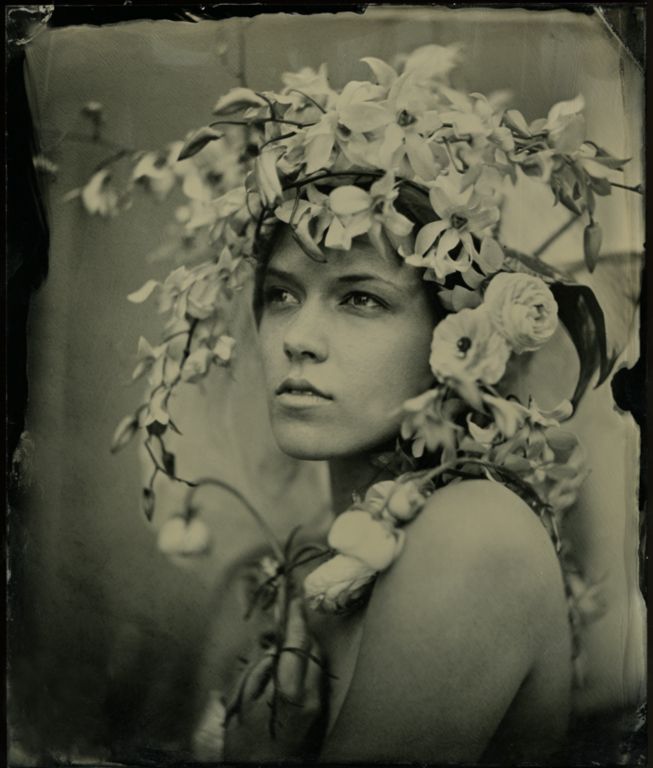
Mark Sink, Caitlin with flowers, 2012, collodion wetplate
Collaborations: photography can be both solitary and collaborative. Long hours developing film and editing it, other parts of photography are collaborative—you might have live subjects, both long elaborate sittings or quick, off the cuff snaps . . . Speak about your collaborations/collaborative spirit in terms of the show, from those with your wife Kristen Hatgi to your daughter Poppy, and to the more passive objective of simply recording time and place—say the Polaroids . . . Give us an insight in to technical challenges or techniques, from perhaps the more solitary perspective, but perhaps not . . .
From start to finish I am a portrait photographer . . . Inspired by Andy I shot everything everywhere, anything the moved . . . thousands and thousands of rolls. For the last five decades, I have been expanding my understanding of portraiture using a wide range of experimental and alternative processes, sometimes obsessively. The thread that connects a large amount of my portrait work is long exposure, the act of “holding still,” a concept, which reveals what is most important and present in his subjects. A person is more “there” that has to hold still. The Diana is a simple plastic toy camera with that was first manufactured in the 60s. I have had a long, almost 30-year relationship with Diana. She was with me before and through my period at Warhol’s Factory, even though Andy hated the camera. It was too “old fashioned looking.” Diana got me into New Yorker, Vogue and Details and my first solo show in NYC in 1986 titled, “Twelve Nudes and a Gargoyle.” And cooperate accounts such at Wells Fargo, Putumayo clothing and Dial soap even.
Andy loved my Polaroid work . . . The ‘80s were a wild explosive period for me in the city. I became friends with many rising art stars because I photographed their artwork and I extensively documented the scene at openings and in artists’ studios. During this time I started using Polaroid SX-70, and stumbled upon a method of making unusual Polaroid portraits. Lucas Samaras showed me ways to manipulate the Polaroid to make extraordinary images. I found you could cover the light meter and fool the camera’s shutter to stay open. During this extended exposure I could paint light onto the sitter. What a wonderful new mission. I could now spontaneously approach a celebrity artist and ask if I could take a Polaroid. Ninety nine percent of the time they said yes because of the Polaroid’s innocent appeal. I would ask the person to hold very still for eight seconds while I bathed them in small bursts of light, what I call light painting. It was a kind of performance, with me moving around the subject while painting light in. The sitter usually stayed to see the magic of the Polaroid, and upon seeing the photo signed the bottom and often asked for more. The Polaroid was a great calling card and opened many doors for me. I see these Polaroids as a wonderful small document of the 80s NYC.
The basic cyanotype recipe, where prints are developed outdoors by the sun, has not changed since scientist Sir John Herschel introduced it in 1842. Julia Margaret Cameron, a close friend to Herschel, sought to master the process through her portraiture and, like the Sinks, decorates her familiar and famous subjects with costumes and adornments for extended poises. Both Herschel and Cameron are “heroes” and clear influences to our practice. Cyanotypes were notably used in Herschel’s era by Anna Atkins. Her floral work inspired us with Poppy, to make their (our)? cyanotype floral series.
My wife Kristen and I use the historic wet plate collodion process and antique cameras to create modern ambrotypes and tintypes. The photograph is created by pouring a thin layer of collodion on a glass or tin plate before sensitizing it with silver nitrate. Collodion on glass is known as an ambrotype; poured on tin it’s called a ferrotype or tintype. This process was developed by Frederick Scott Archer in 1851. Among famous photographers who used it are William Henry Jackson and Matthew Brady (who learned the process from Samuel Finley Breese Morse). By the turn of the 20th century, new inventions such as film and paper prints had made image making far easier, and wet plates fell out of favor. Contemporary artists like Sally Mann, Scully & Osterman, and locally, Chris Perez, Hunter Helmstaedter, Sink & Hatgi, are at the forefront of its revival.
I am known for working within a romantic tradition and in these color still life works from the early ‘90s. I was inspired by Dutch Old Master still life paintings of the 1600s. In particular Rachel Ruysch (1664 – 1750). They show beauty in the light of life as well as in death. The whole drama of the life cycle unfolds before your eyes; flowers, vegetables, bugs and animals populate the image while in the dark recesses there are worms, snails, the dead and dying being recycled back into the earth through decomposition.
Photograms are images produced without a camera or enlarger. I lay objects directly on photographic paper, then expose it with a flash of light and develop it in the dark room. I use simple, meditative objects for these photograms because sometimes the things closest to you can be the most beautiful. Light traveling through the glass of a wine goblet or a bottle creates endless new surprises. Flour, salt, pepper and dust exposed on silver gelatin paper become vast universes of infinite detail.
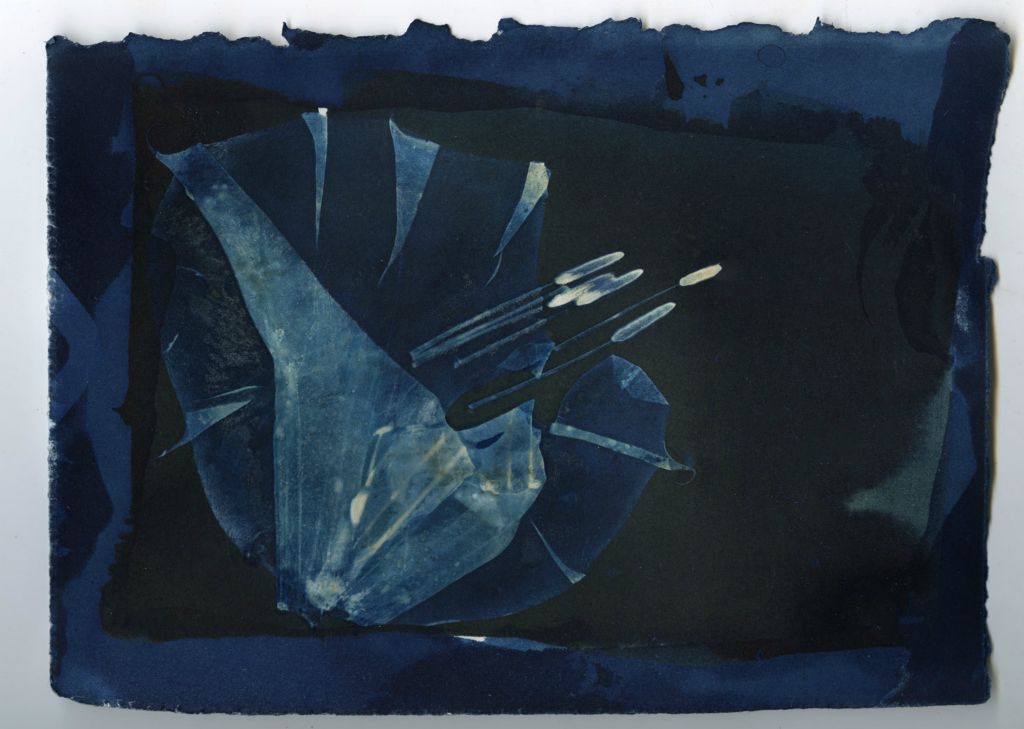
Mark and Poppy Sink, Flower contact prints, 2021, cyanotype
That talk of collaboration brings us to what I’ll call your salon/club effect. . . Your great grandfather, James L Breese Sr, began a salon in NYC, “One of 1001 Nights” at Camera Club of New York, that included some of the best coteries of New York society—Stanford White, Nicola Tesla, John Singer Sargent to name just a few. You have been involved with clubs or salons—an integral part of your practice from the Denver Salon to Denver Collage Club (with Mario Zoots) even to the Month of Photography . . . Please end our discussion with the history and nature of these gesture’s importance, and the collaborative communication of it all . . .
It’s really what my life story is . . . this show is all about it. I have been collecting people into salons before I even knew what I was doing. Maybe it’s an insecurity about my own work and needing a team to bolster me? Maybe I am just inspired by great talent, and want to promote it? It’s in my DNA—like Breese gatherings of explorers around you. The people on the edge, the queer, the disenfranchised, one foot in the gutter, one foot in royalty . . . The misfits, mixed with society’s royalty. Makes the best parties ever . . . and people remember great parties. You can see the thread and everything I do from the first meetings in my backyard for MCA Denver or the Month of Photography or the Denver Salon or the Denver Collage Club, it’s power in numbers, even with the Month of Photography, we formed an international group called the Festival of Light that is interconnecting all the photo festivals around the world together. I just can’t help myself. Then when the organization gets up and going it’s a job.
Now I’d like to move on to my last big salon mission. Picture this as a giant archive and gallery space for all of us retiring artists. Not a museum, not a library, kind of a purgatory, simple safe house for future generations who may one day dig into . . . be in a salt mine or old missile silo. That’s just part . . . the big dream is a giant arts retirement center that old people can teach young people to grow beautiful gardens with a big cooking center at its heart, media labs to watch great old movies. Pottery and sculpture made with your hands. I would really, really, really love to see this through . . .